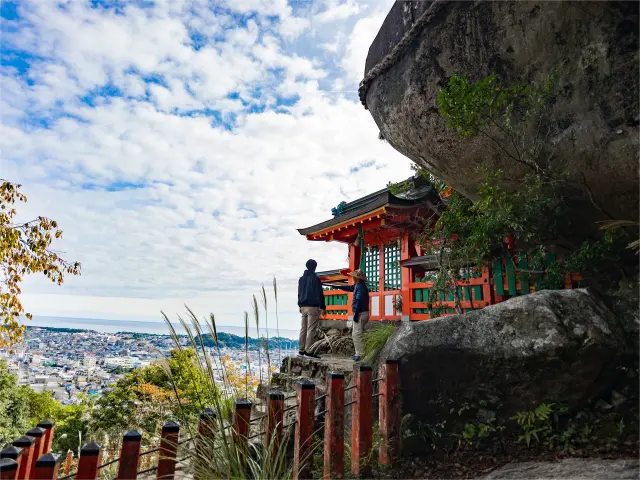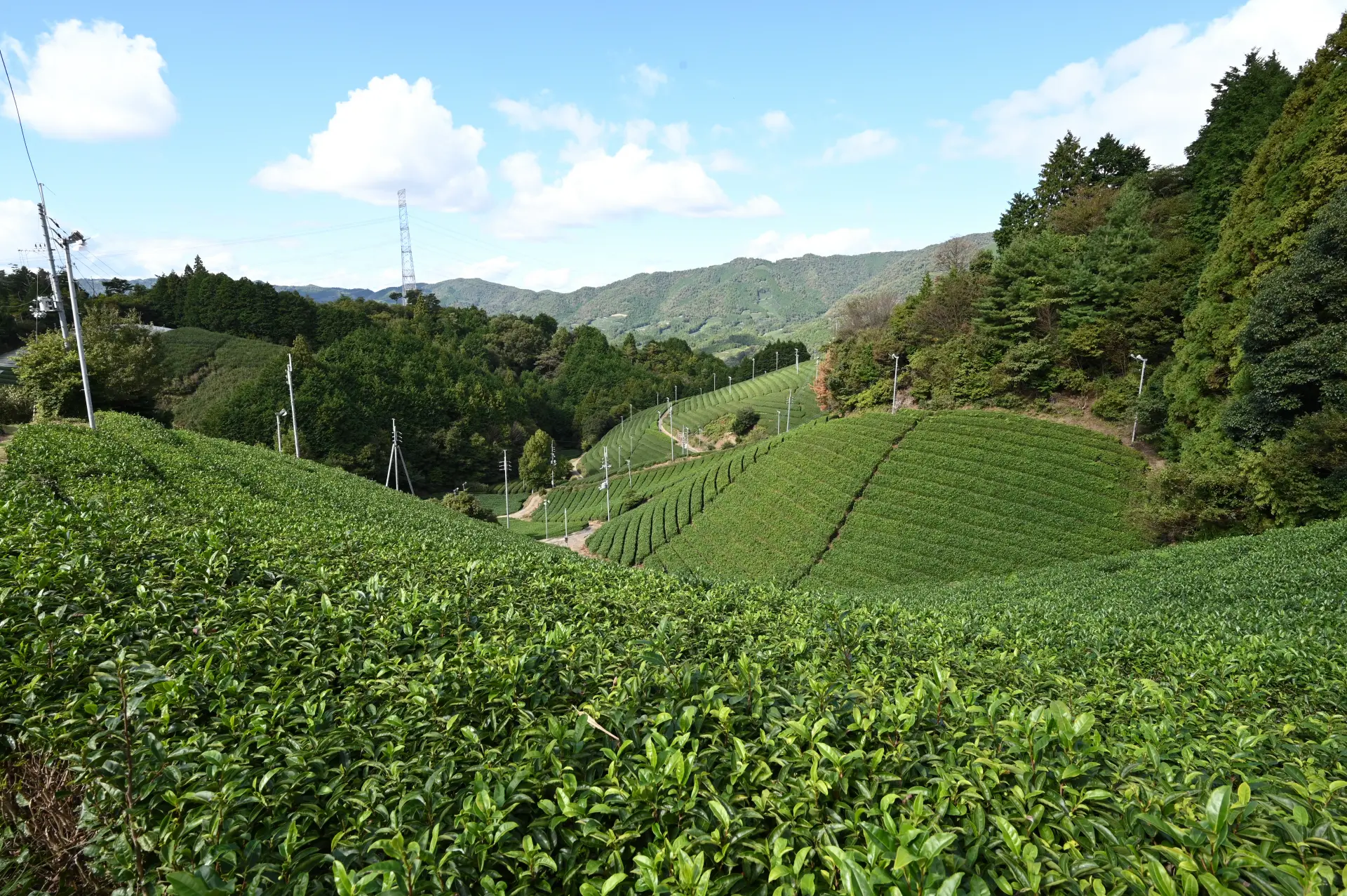
Kyoto: A Journey Through Japanese Gastronomy
Last update
In 2013, Washoku (Japanese cuisine) was inscribed as a UNESCO Intangible Cultural Heritage. In Kyoto, a city steeped in history, traditional Washoku culture thrives, with Kyoto’s Five Great Cuisines at its core.
This itinerary takes you through Kyoto, the heart of Washoku, where you can see, learn, and experience the fundamentals of Japanese cuisine, including tea, sake, and dashi. Join us on a journey to experience Kyoto’s rich culinary traditions.
Table of Contents
DAY1
8:51 – Depart from JR Osaka Station
The journey begins at JR Osaka Station, heading to Wazuka-cho, a renowned tea-producing region. Take the Kishuji Rapid Service bound for Wakayama, then transfer at Tennoji Station to the Yamatoji Rapid Service bound for Kamo. Upon arriving at Kamo Station, board the No. 65 bus bound for Harayama, Wazuka-cho, and get off at Higashi-Wazuka Bus Stop. As you step off the bus, the bustling cityscape fades away, revealing a lush, green landscape—a stark contrast to the urban scenery.
11:00 – Learn About Japanese Tea with a Tasting Tour at Kyoto Obubu Tea Farms
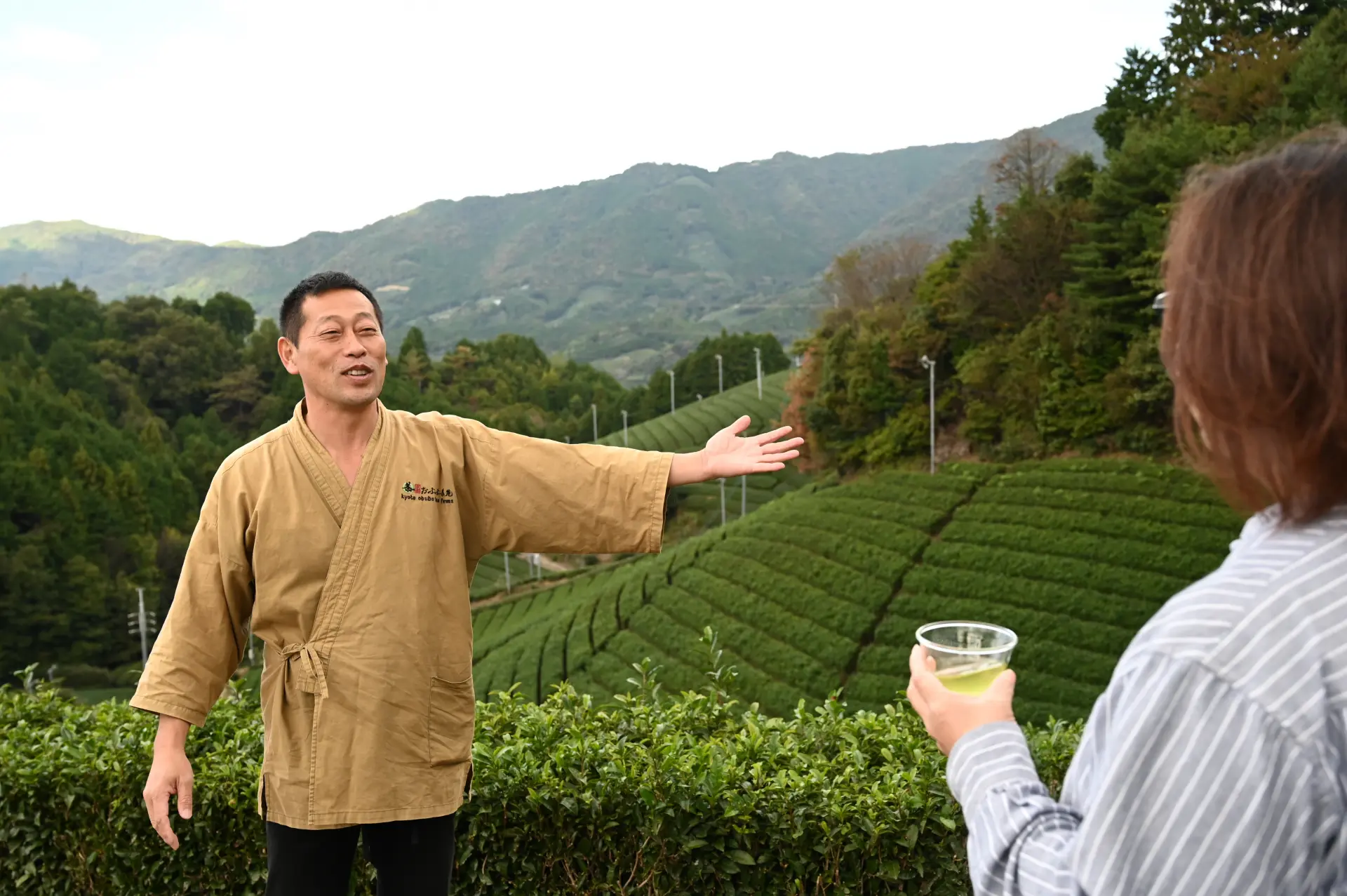
A tea farm tour while enjoying a cup of Japanese tea and learning about its culture.
Wazuka-cho has been a renowned tea-producing region for 800 years. Its breathtaking tea fields, part of the "800 Years of Japanese Tea Heritage", have been recognized as a Japan Heritage Site.
Founded in 2004, Kyoto Obubu Tea Farms is dedicated to the mission of "Bringing Japanese Tea to the World." The farm produces over 100 varieties of tea, selling both domestically and internationally, while also hosting various events to introduce the world of Japanese tea.
On this Tea Farm Tour, participants learn how different types of tea can be made from leaves grown in the same tea fields. The tour also includes Japanese tea tastings and a guided tour of the tea fields.
The experience begins with a video presentation on Japanese tea, accompanied by a cup of Hojicha (roasted green tea). The knowledgeable staff answer various questions about tea, building anticipation for the upcoming tea farm visit.
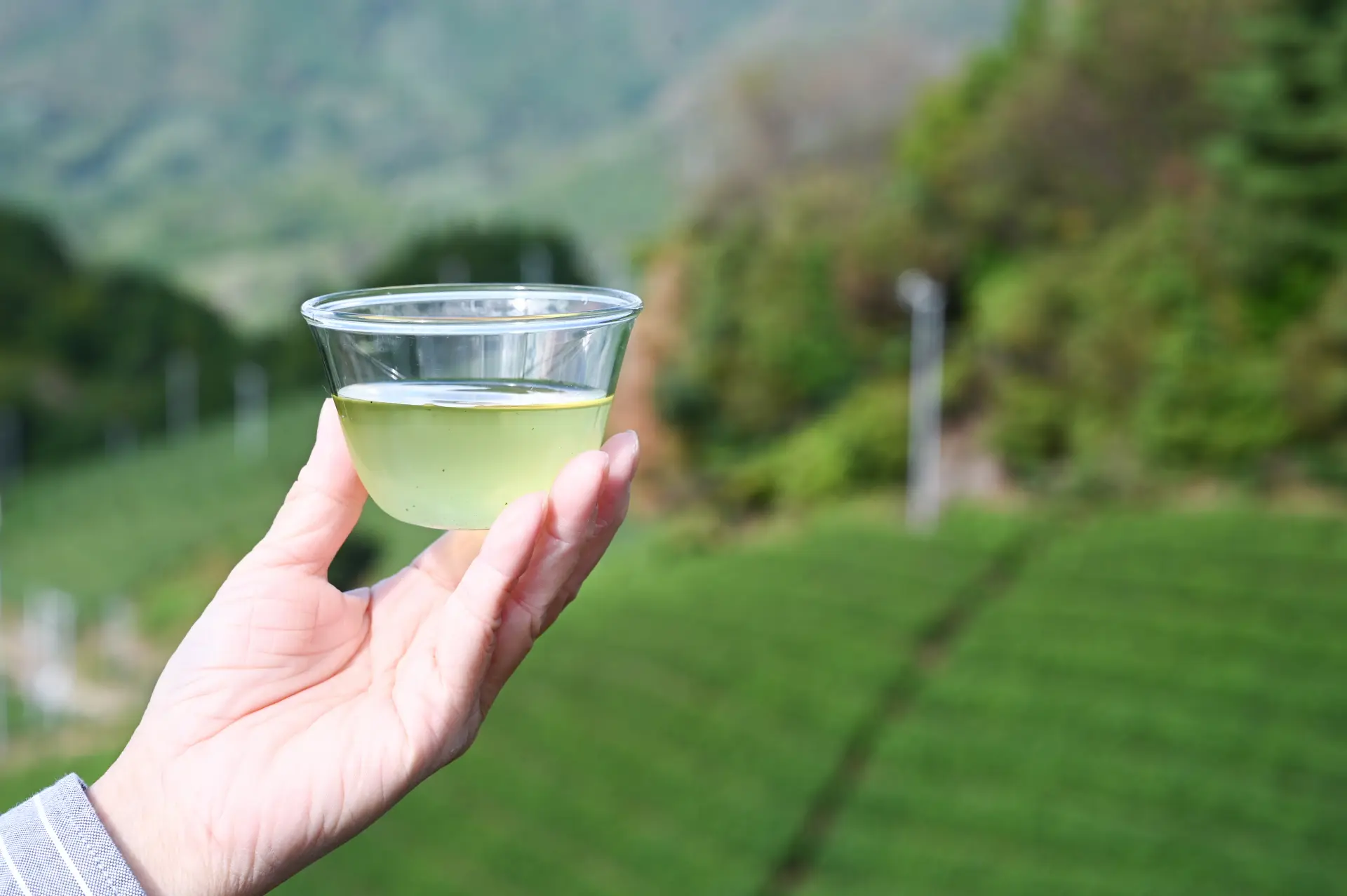
Drinking cold tea while gazing over the tea fields is truly refreshing!
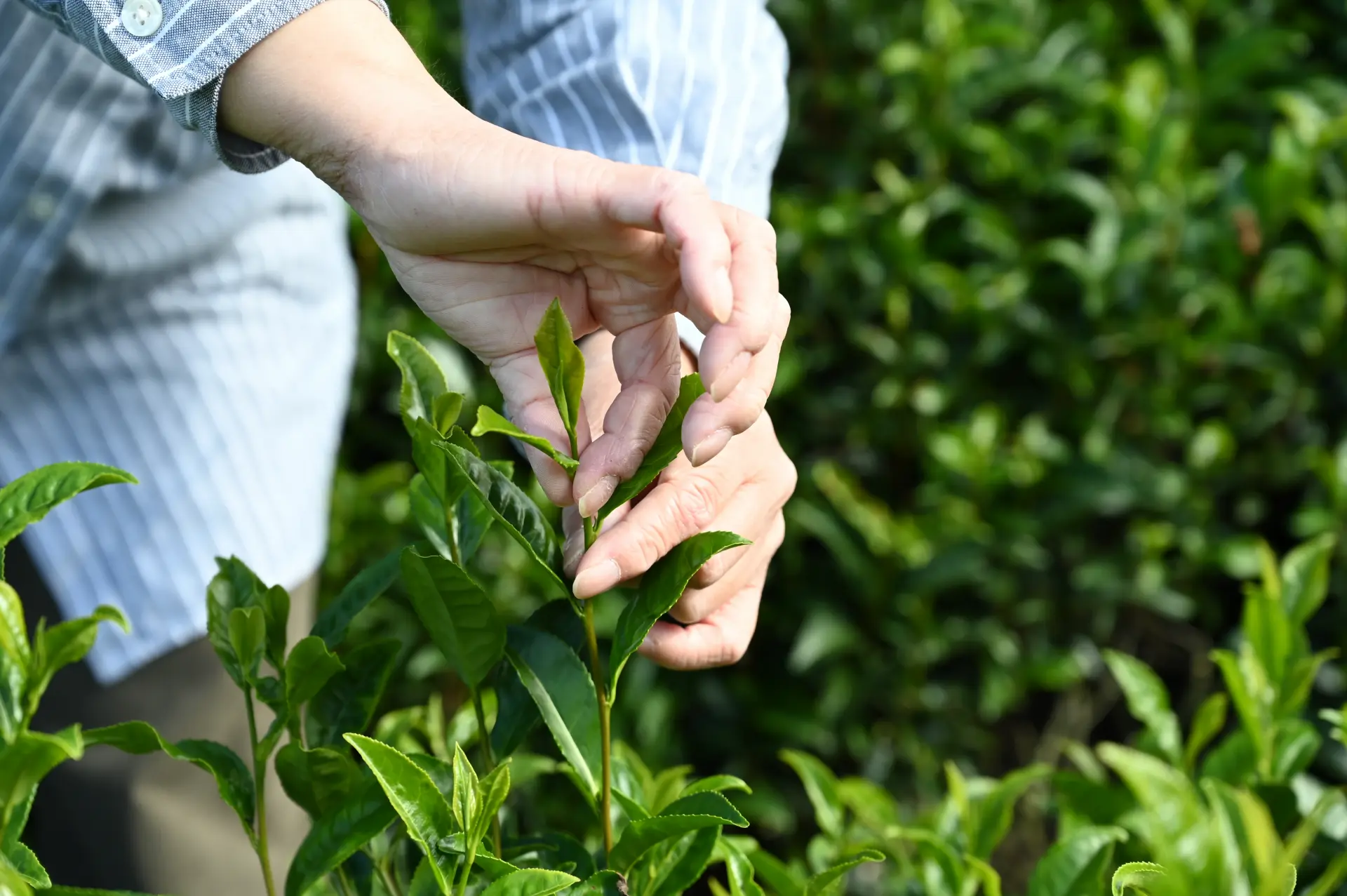
Tea picking experience while receiving a lecture at the tea fields
Next, the group heads to a tea field located on a steep slope. Driving along the narrow, winding mountain roads feels like an adventure in itself. Upon arrival, expansive fields of vibrant green tea plants unfold before your eyes. Here, participants touch tea leaves, learn about Japanese tea cultivation, and enjoy a refreshing cup of cold Sencha, which tastes exceptionally good in this setting.
The tour continues with a visit to the tea processing factory, where guests observe the tea-making process firsthand.
Following the factory tour, it's time for lunch. While enjoying a delicious Ochazuke meal, participants also sample Genmaicha (roasted rice tea).
After lunch, visitors try their hand at whisking their own Matcha under the guidance of an expert, savoring the deep flavors of the tea they prepare.
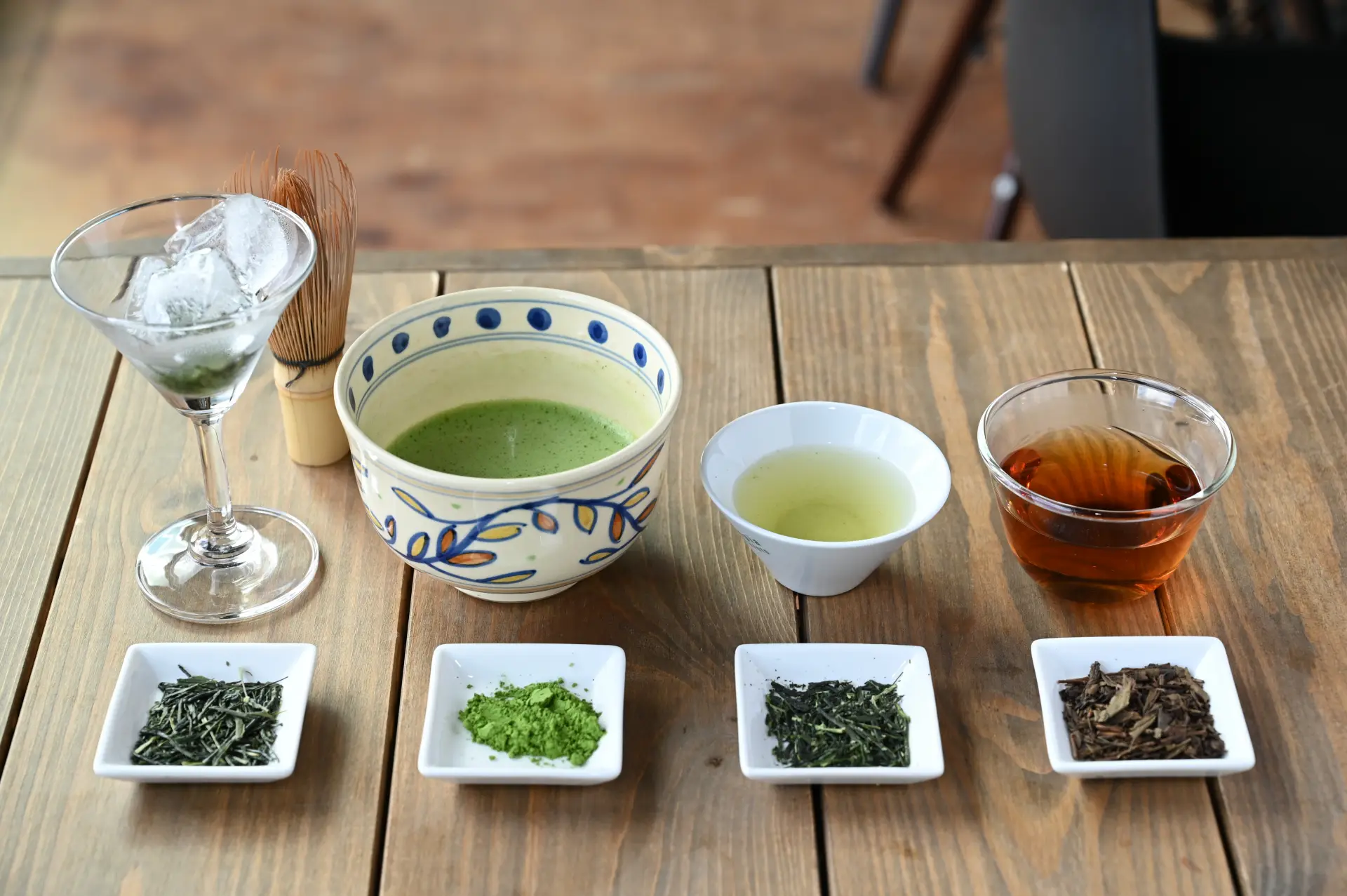
The tasting session features nine varieties of Japanese tea, including ice-brewed gyokuro and matcha. Each tea is prepared using different utensils, leaf shapes, temperatures, and brewing techniques.
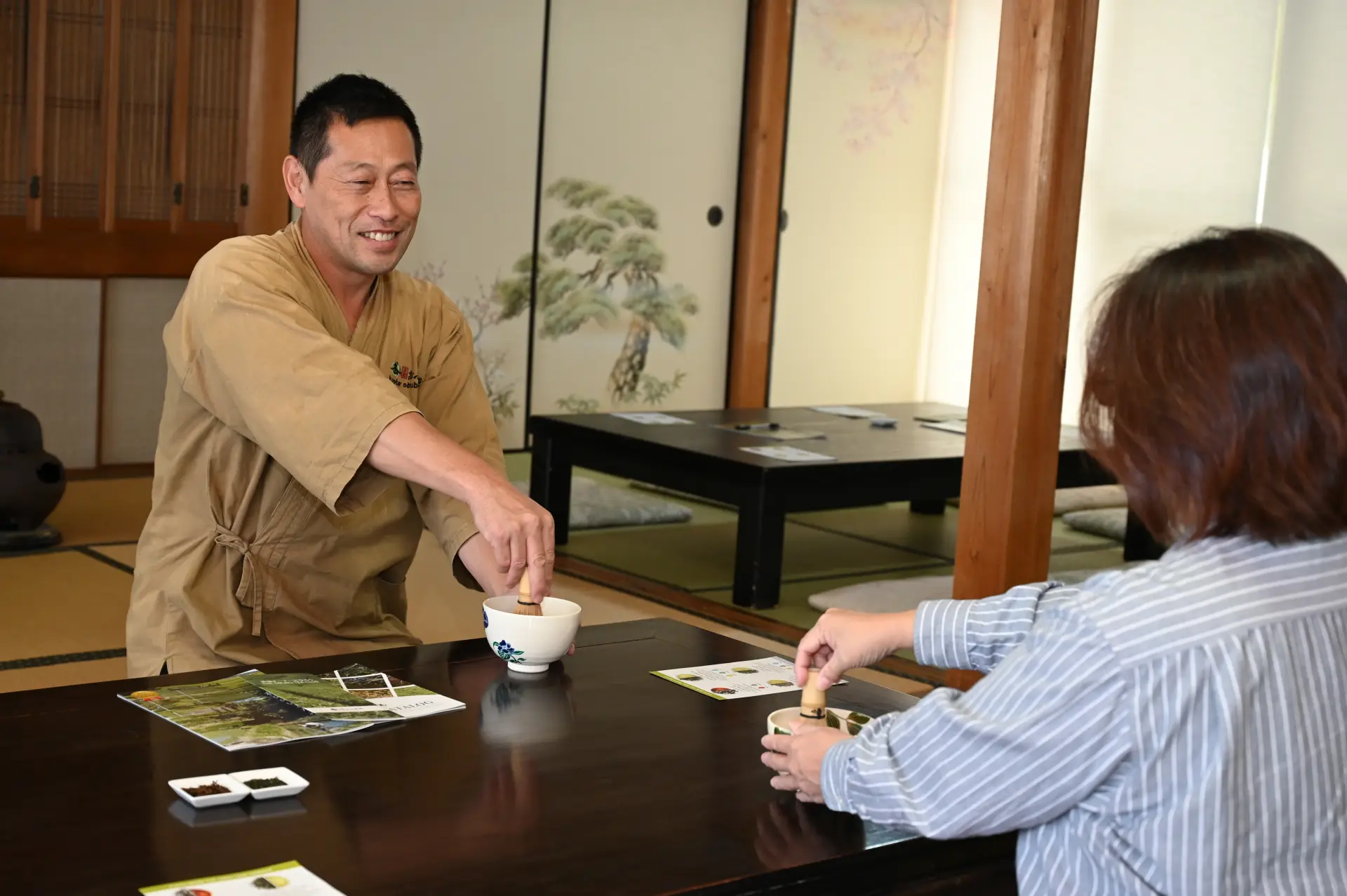
A fun approach to whisking matcha, different from traditional tea ceremony methods.
Throughout the tour, participants taste nine different types of Japanese tea. They learn how water temperature and teaware influence the flavor and aroma, gaining a deeper appreciation for the rich diversity of Japanese tea.
Basic Information
- Name in Japanese
- 京都おぶぶ茶苑
- URL
- URL
17:20 – Enjoy Kyoto Cuisine & Explore Traditional Architecture at the Historic Ryotei “Kinsuitei”
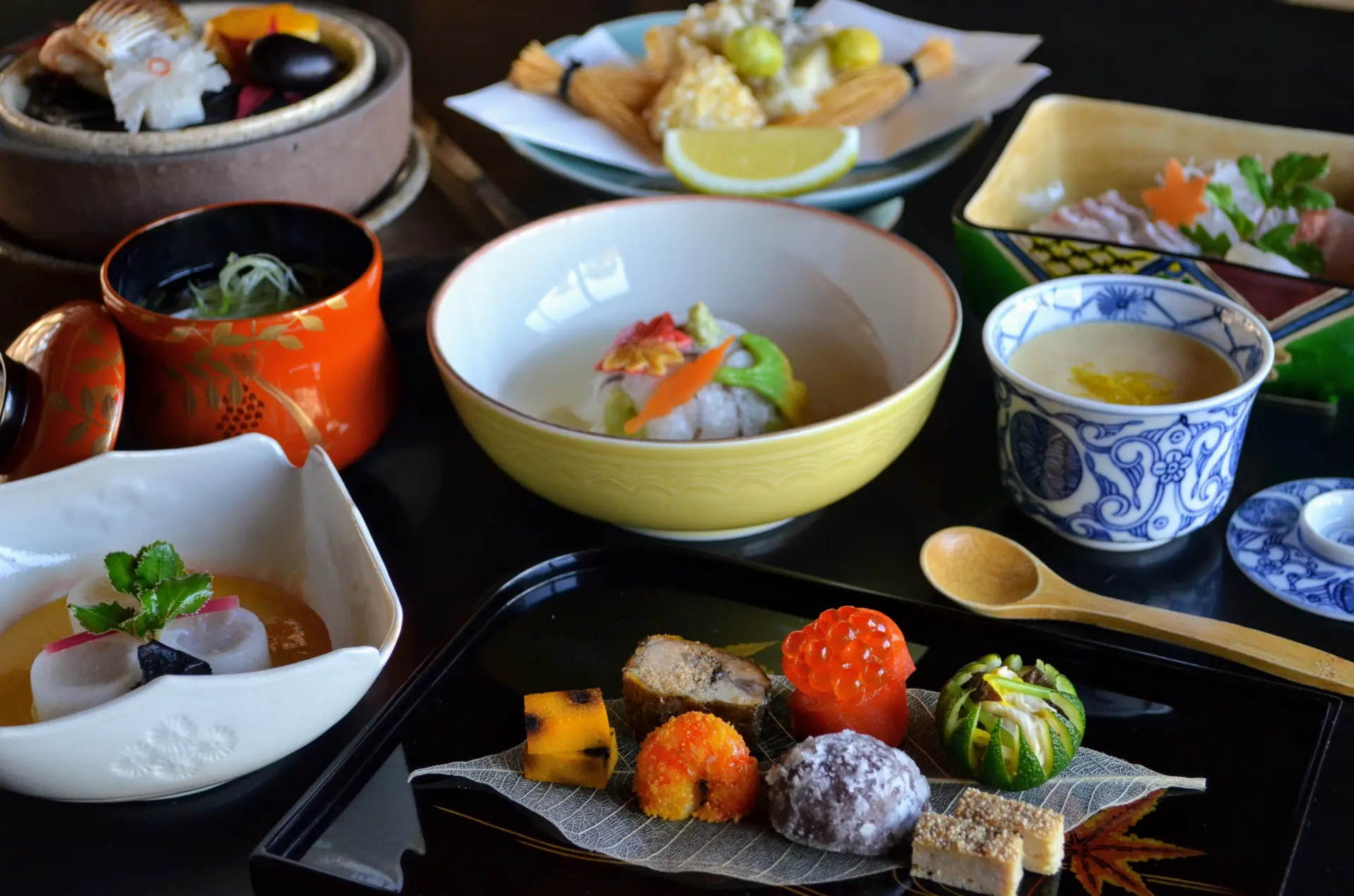
A meticulously arranged kaiseki meal featuring seasonal ingredients
After an immersive journey into the world of Japanese tea, the tour heads to Kyoto City. Departing from Higashi-Wazuka Bus Stop, take the bus to Kamo Station West Exit, then transfer to JR Yamatoji Rapid Service bound for Osaka, getting off at Kizu Station. From there, take the Miyakoji Rapid Service to Kyoto Station, then transfer to the Kyoto Line, disembarking at Nagaokakyo Station. A 10-minute taxi ride brings you to the dinner destination.
Established in 1881, the historic Ryotei Kinsuitei offers a unique experience combining Kyoto Kaiseki cuisine with a guided tour of a traditional Japanese building that is over 100 years old.
The guided tour of the traditional building takes visitors through architectural highlights with the assistance of a knowledgeable guide. The main building, constructed in 1927, features a grand staircase, a spacious banquet hall with intricate coffered ceilings, and continuous windows, among other impressive elements. One of the most captivating sights is the pond-side teahouse, which appears to float on the surface of Hachijo Pond. The tour also grants access to normally closed-off sections of the building, showcasing architectural styles such as Irimoya-zukuri with tile roofing and Yosemune-zukuri with shingle roofing. The refined aesthetic of these teahouses, viewed from across the pond, is truly breathtaking.
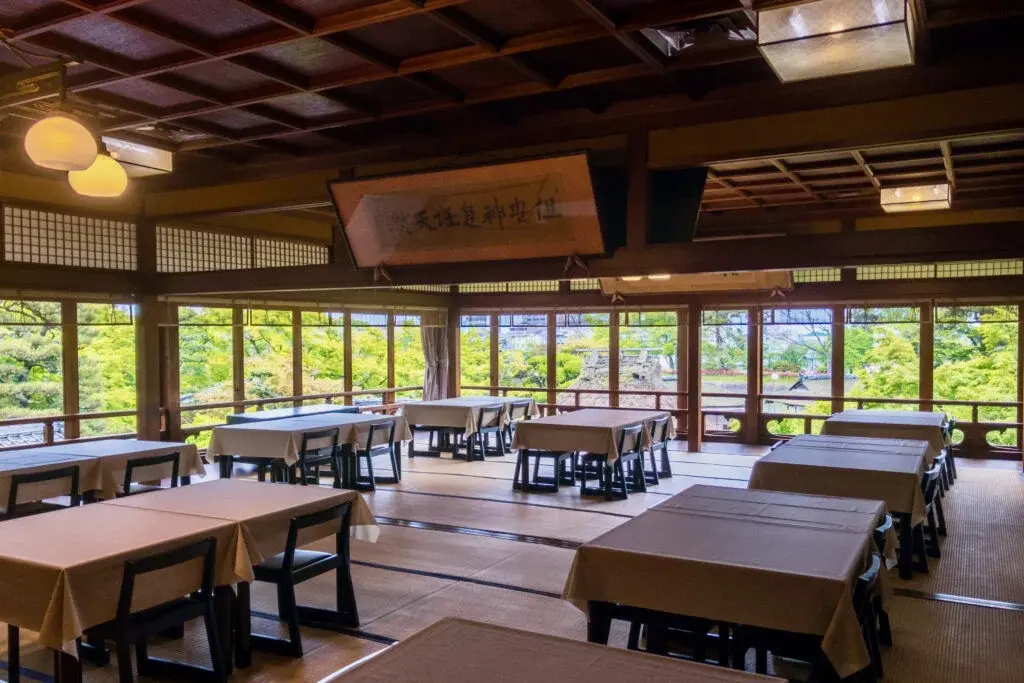
Through the window, seasonal landscapes unfold—lush greenery in summer and vibrant autumn leaves in fall.
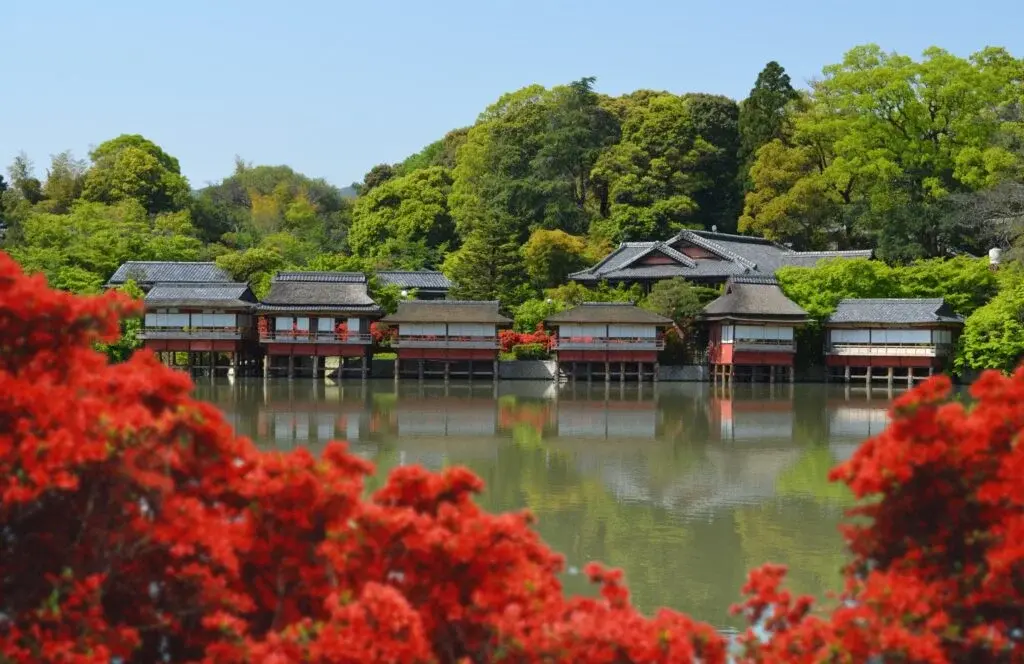
A picturesque view of sukiya-style lakeside pavilions elegantly lined up along the water.
At dinner, guests indulge in a seasonal Kyoto Kaiseki meal. The beautifully arranged dishes include Hassun (a seasonal appetizer platter), Sashimi, Simmered Dishes, and Grilled Dishes, each carefully plated to delight both the eyes and the palate.
Basic Information
- Name in Japanese
- 創業140年の老舗料亭での京料理(懐石料理)と伝統的な和風建築の見学ツアー
- URL
- URL
20:50 – Unwind at Hotel Discover Kyoto Nagaokakyo, a Stay Surrounded by Natural Wood
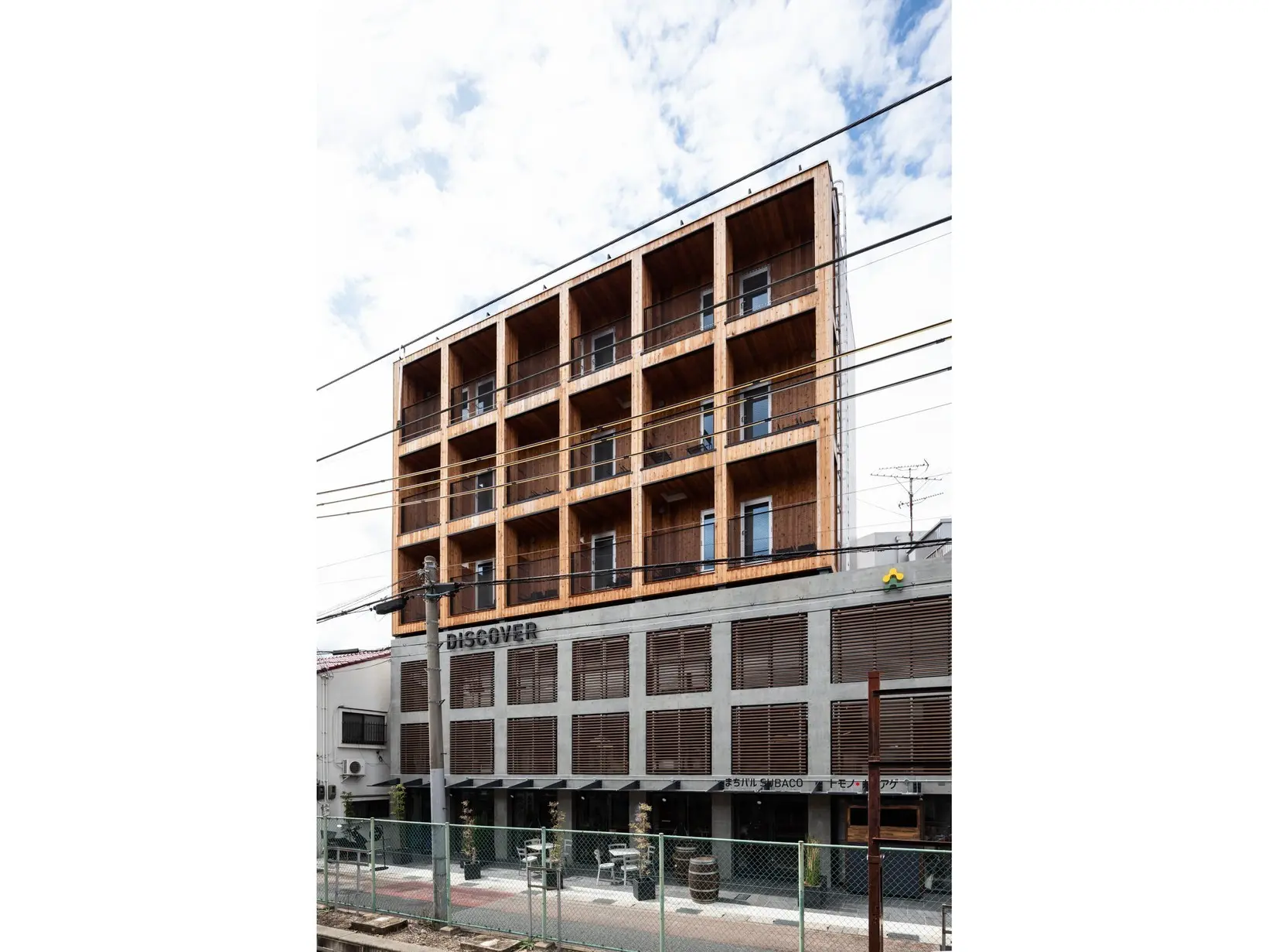
A striking modern exterior featuring concrete and wood materials
After enjoying a refined Kaiseki meal, the next stop is Hotel Discover Kyoto Nagaokakyo, just a 10-minute walk from Kinsuitei. Located right next to Nagaoka-Tenjin Station, the hotel is conveniently situated for exploring Kyoto at night.
Designed with sustainability in mind, the building is constructed using locally sourced Kyoto timber, creating a warm and inviting atmosphere. The wood-accented guest rooms provide a relaxing ambiance, and the balconies offer panoramic views of Nagaokakyo City. Each room features a Simmons bed, along with hypoallergenic bedding made from innovative new materials, ensuring a restful night’s sleep.
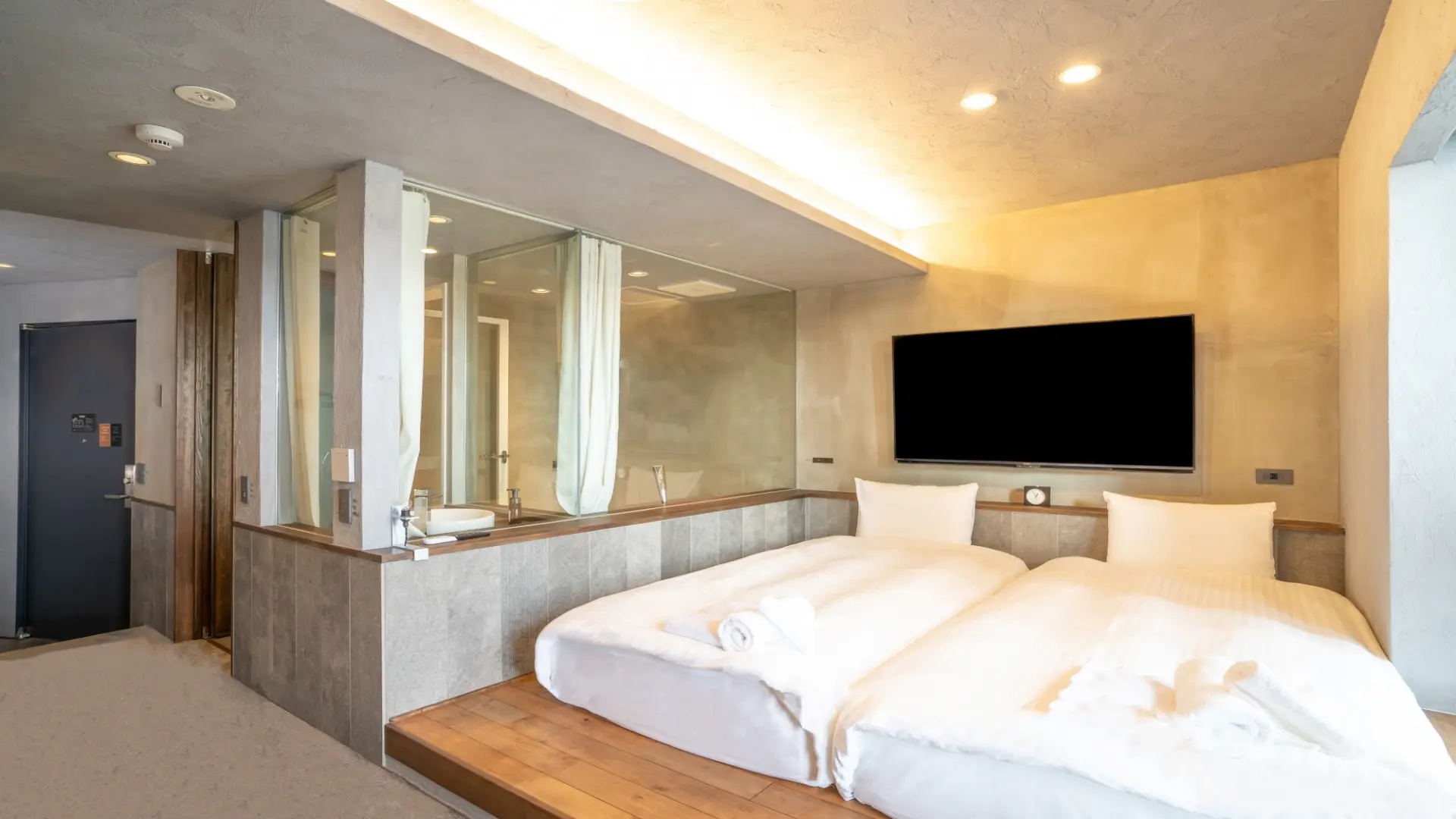
Hollywood twin beds provide a spacious and comfortable stay.
The hotel also has a café & bar, serving a variety of drinks, Kyoto-style side dishes, and snacks. On Fridays, Saturdays, and Sundays, the bar stays open until 10:30 PM, making it a great place to unwind. Additionally, guests can participate in various cultural experiences, such as bamboo basket weaving and wagashi (Japanese confectionery) making, further enriching their stay.
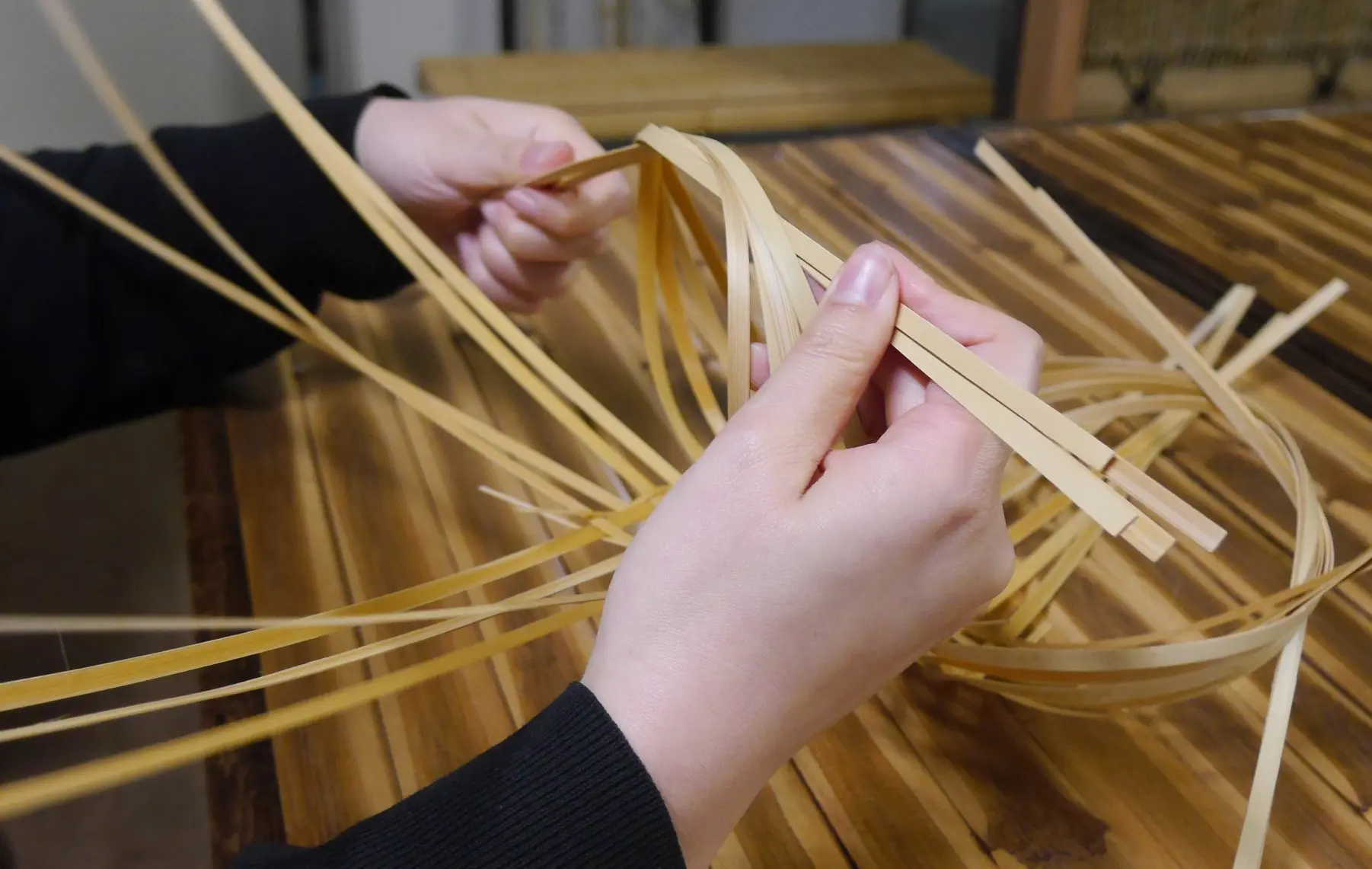
Experiencing Japanese culture through activities such as bamboo basket weaving (available during daytime only)
Basic Information
- Name in Japanese
- ホテルディスカバー京都長岡京
- Address
- 1-7-3 Tenjin, Nagaokakyo, Kyoto 617-0824
- Phone
- 075-925-8855
- Access
- 30 seconds on foot from Hankyu Kyoto Line Nagaoka-Tenjin Station, 10 minutes on foot from JR Kyoto Line Nagaokakyo Station
- Check-in
- 15:00 – 22:00
- Check-out
- 10:00
- Rates
- From 7,500 yen per room per night
- URL
- URL
DAY2
9:00 – Visit Matsunoo Taisha, the Shrine of Sake
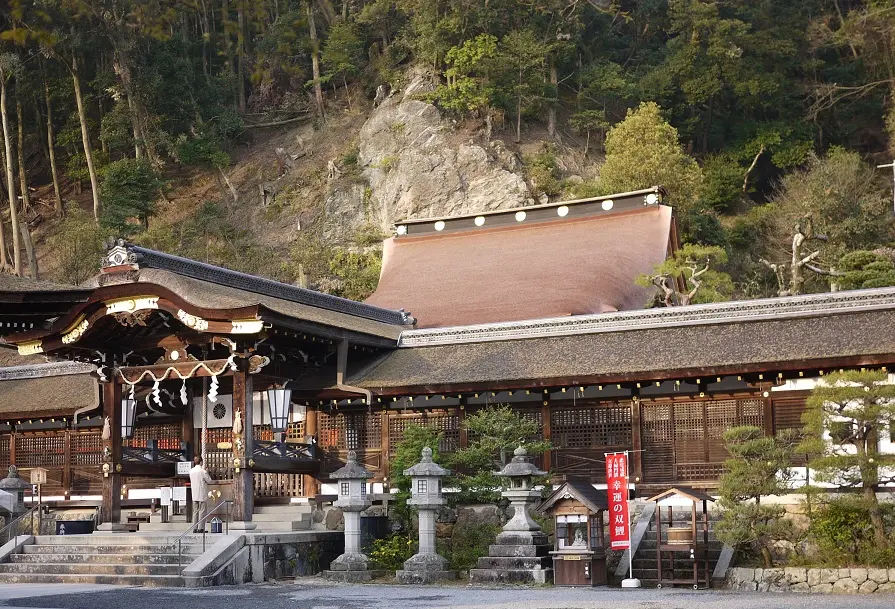
The main shrine building is designated as an Important Cultural Property of Japan.
On the second day, after checking out of the hotel, take the Hankyu Kyoto Line from Hankyu Nagaoka-Tenjin Station to Katsura Station, then transfer to the Arashiyama Line and get off at Matsunoo Taisha Station. As soon as you exit the station, the striking vermilion torii gate of Matsunoo Taisha comes into view.
Matsunoo Taisha, Kyoto’s oldest shrine, was founded in 701 by the Hata clan, who claimed descent from Qin Shi Huang. By the late Muromachi period (1336–1573), it had become widely revered as the guardian deity of sake brewing. Even today, sake brewers from across Japan come to pray at the shrine. Walking through the grounds, you will see rows of sake barrels donated by breweries as offerings. The shrine is also home to the sacred spring "Kame-no-I" (Turtle Well), whose water is believed to have revitalizing properties. Many sake brewers take this water home and mix it into their fermentation process.
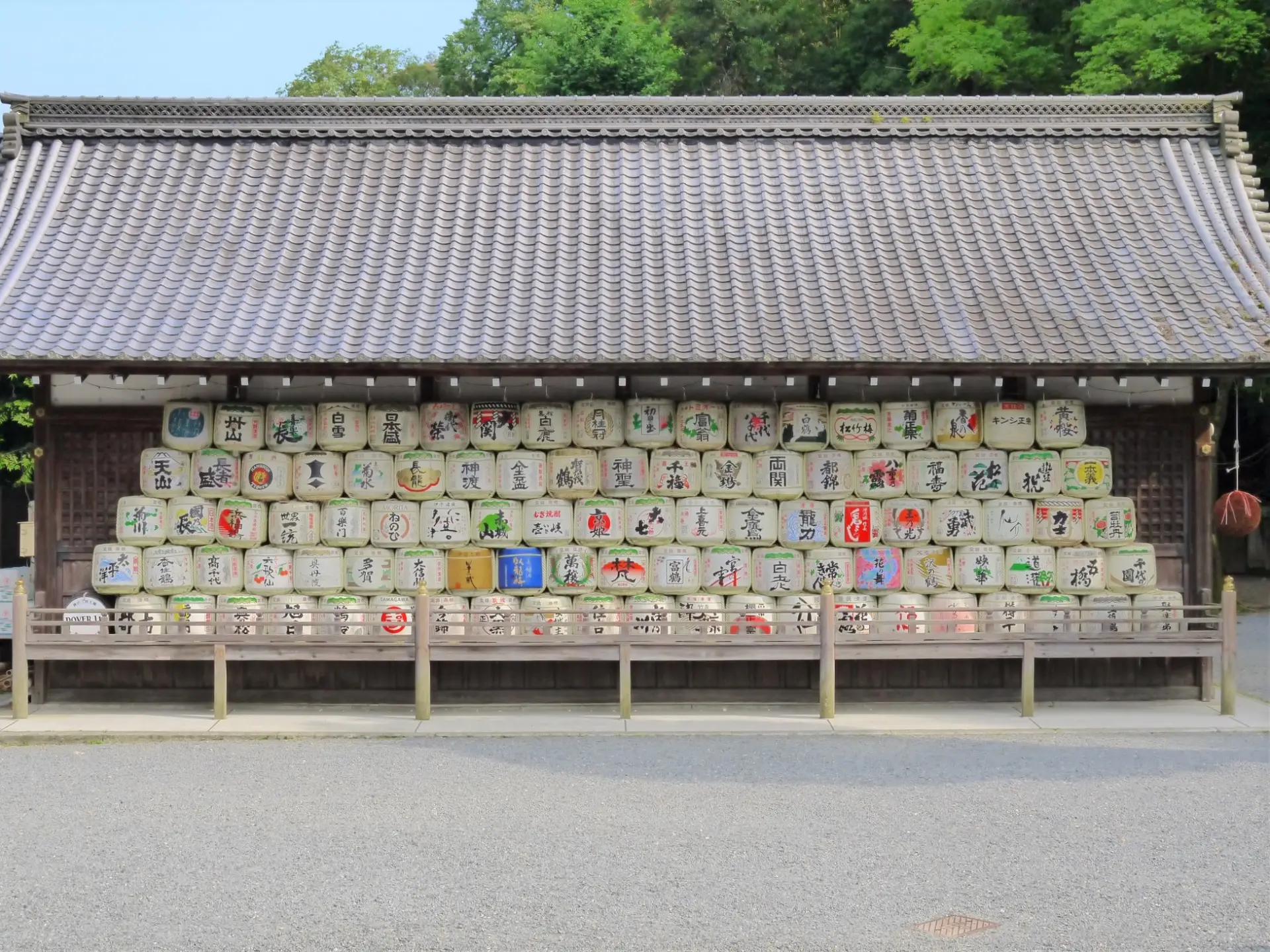
A stunning sight of sake barrels dedicated to the shrine
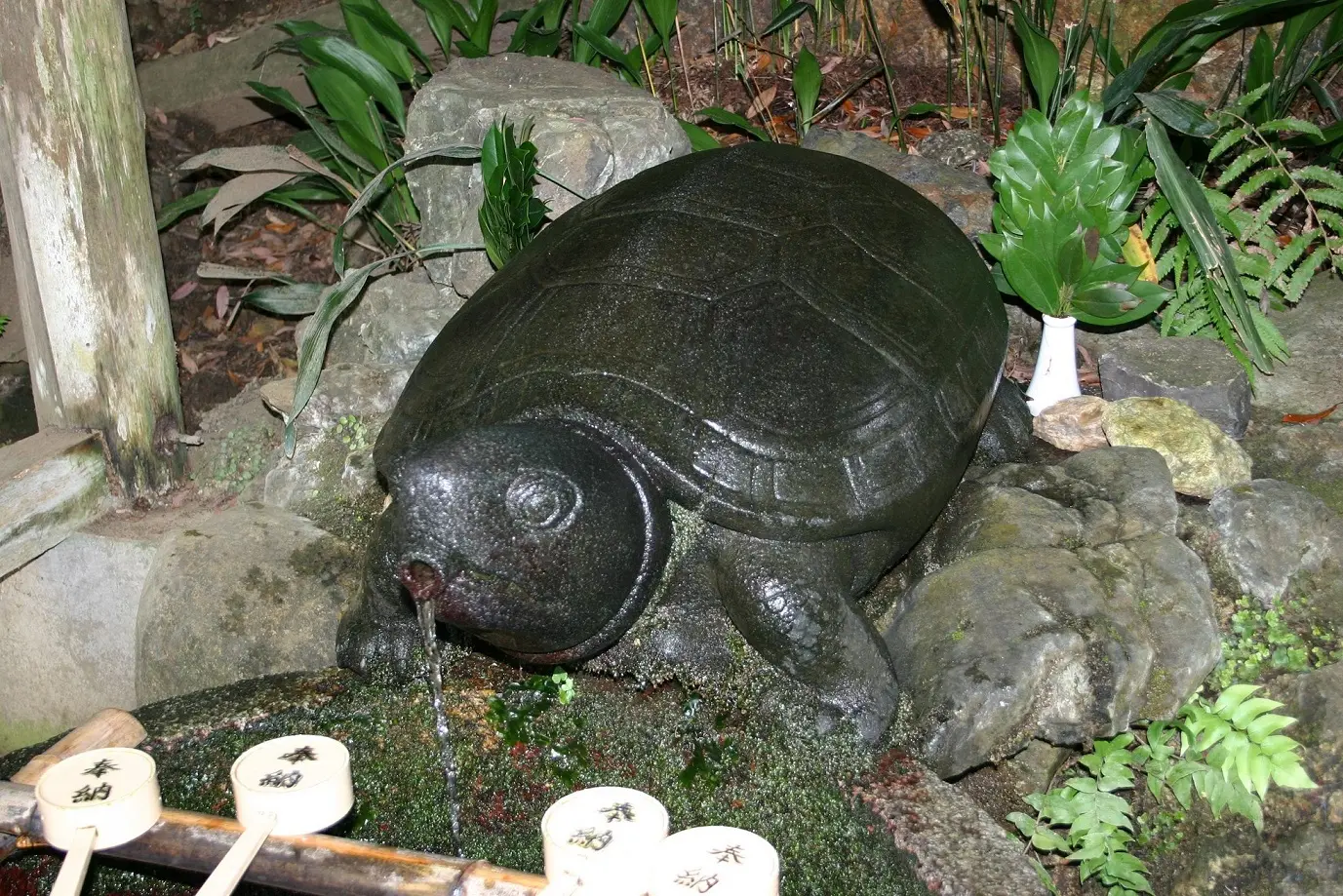
Kame-no-I well water, believed to prevent spoilage when mixed with sake
Another highlight of Matsunoo Taisha is Shofuen Garden, a three-part landscape garden designed by Mirei Shigemori, a celebrated Showa-era garden architect. The shrine is also known for several power spots that attract many visitors. Reiki-no-Taki Waterfall is said to be spiritually significant, and the "Lucky Turtle" stone is believed to bring longevity to those who touch it. The "Aioi-no-Matsu" pine tree is known for its association with romantic blessings. A walk through the shrine grounds offers a chance to appreciate these sacred elements and receive their benefits.
Basic Information
- Name in Japanese
- 松尾大社
- Address
- 3 Arashiyama Miyamachi, Nishikyo-ku, Kyoto 616-0024
- Phone
- 075-871-5016
- Access
- 3-minute walk from Hankyu Arashiyama Line Matsunoo Taisha Station
- Hours
- Weekdays & Saturdays: 9:00–16:00 / Sundays & Holidays: 9:00–16:30
- Admission
- Free (Shofuen Garden: Adults ¥500, Students ¥400, Children ¥300)
- Closed
- Open year-round
- URL
- [URL}(https://www.matsunoo.or.jp/)
11:00 – Discover Kyoto’s Culinary Heritage at "Kyo no Shoku Museum Ajiwaikan"
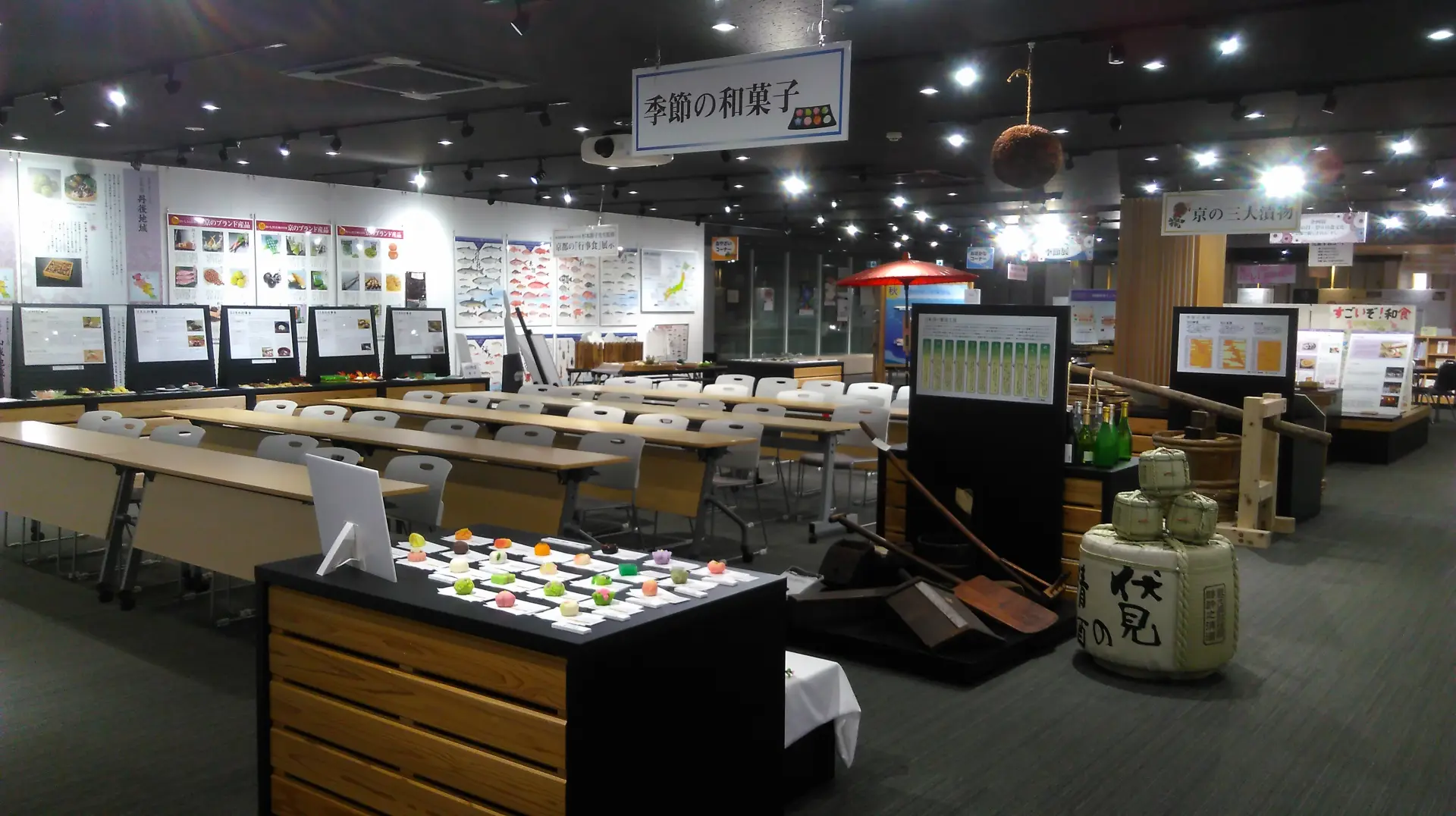
An opportunity to learn about Kyoto’s long-preserved food traditions
After visiting Matsunoo Taisha, head to the Kyo no Shoku Museum Ajiwaikan to explore Kyoto’s food culture. From Matsunoo Taisha-mae Bus Stop, take City Bus No. 28 to Shijo-Nakashindo Bus Stop, then walk south through a quiet residential area to reach the museum.
The exhibition showcases Kyoto’s Five Great Cuisines, including Honzen Ryori, a traditional samurai banquet, and Shojin Ryori, Buddhist vegetarian cuisine. It also features Kyoto pickles, sweets, and vegetables, presented with realistic models and panels.
A traditional "Okudosan" kamado rice stove and a display of Kyoto-style knives highlight local culinary craftsmanship.
The dashi tasting corner lets you compare bonito- and kombu-based broths, revealing the deep umami flavors essential to Kyoto cuisine.
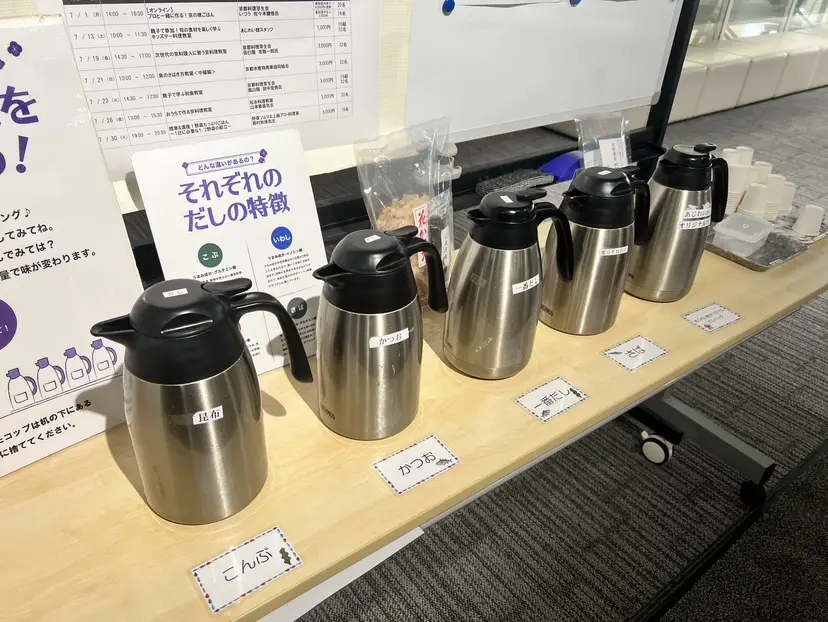
A chance to compare different dashi broths, an essential element of Kyoto cuisine (available until the daily supply runs out).
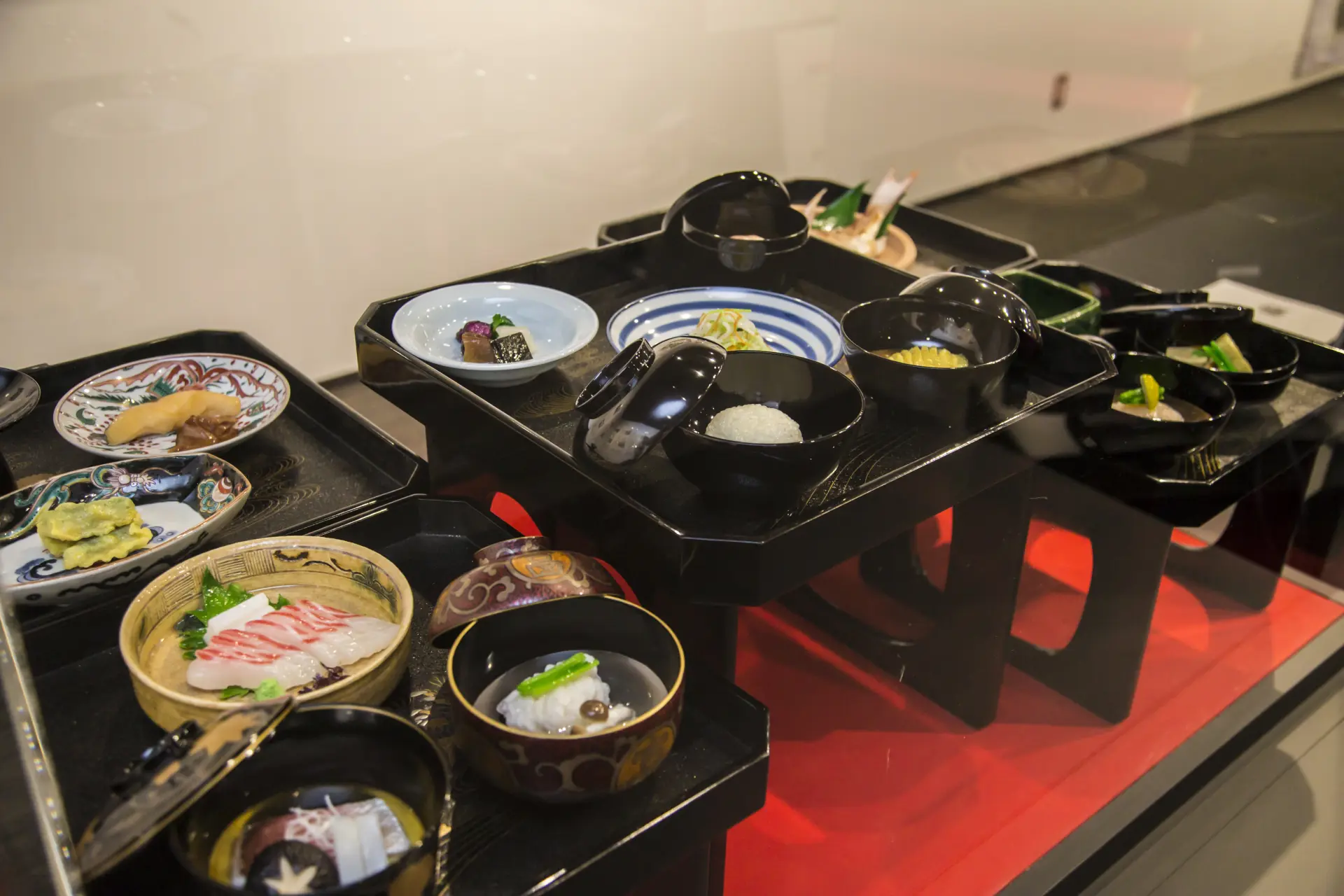
Introducing Kyoto’s food culture with incredibly realistic food replicas.
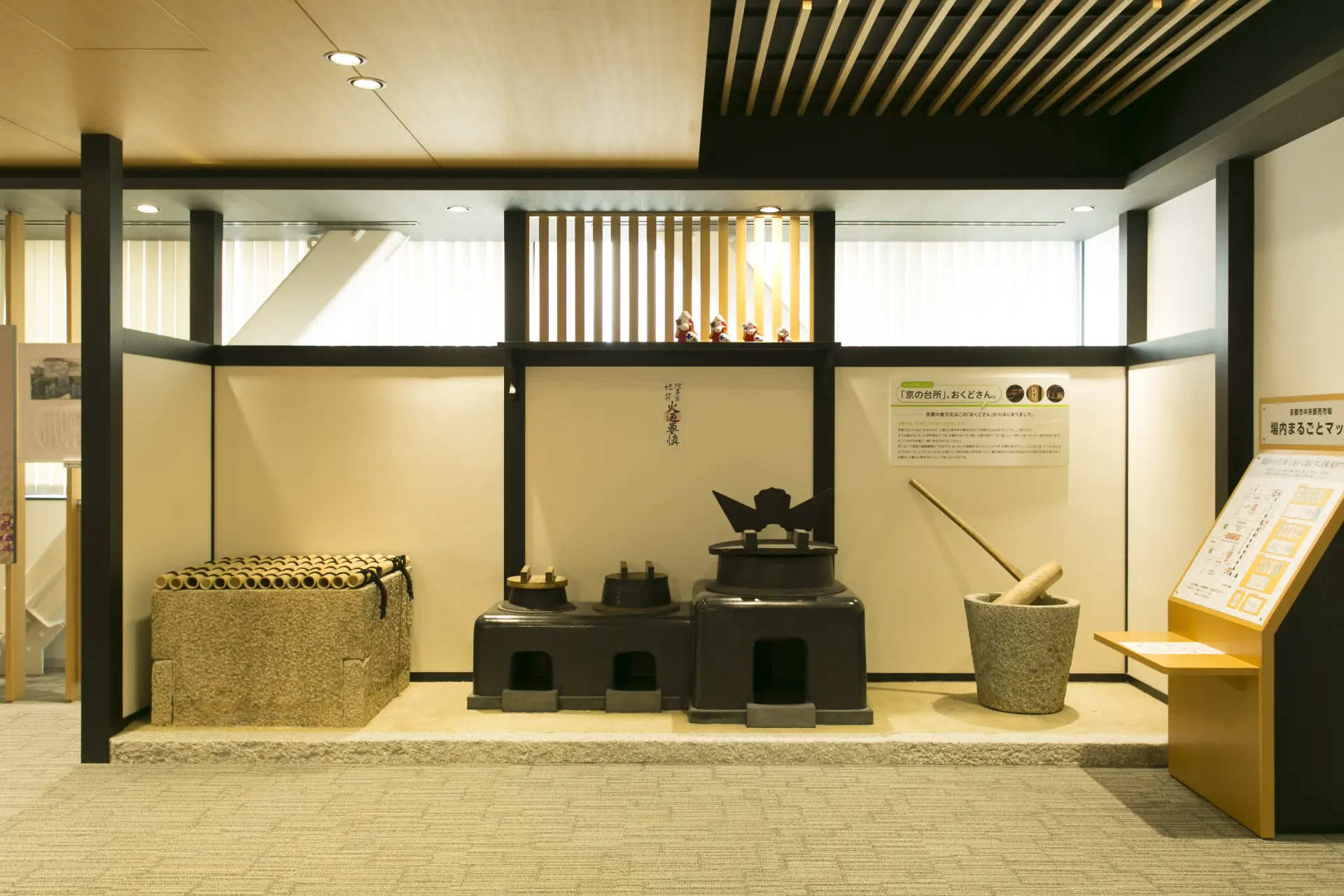
A display of the traditional Japanese "Okudosan" stove once used for cooking.
Basic Information
- Name in Japanese
- 京の食ミュージアムあじわい館
- Address
- 3F Kyoto Seika Center Building, 130 Chudoji Minamimachi, Shimogyo-ku, Kyoto 600-8813
- Phone
- 075-321-8680
- Access
- 3-minute walk from JR Tanbaguchi Station
- Hours
- 8:30–17:00
- Admission
- Free
- Closed
- Wednesdays (open if a holiday), December 31 – January 4
- URL
- URL
12:10 – Experience the Lively Atmosphere of Kyoto’s Central Wholesale Market: Suisan Building
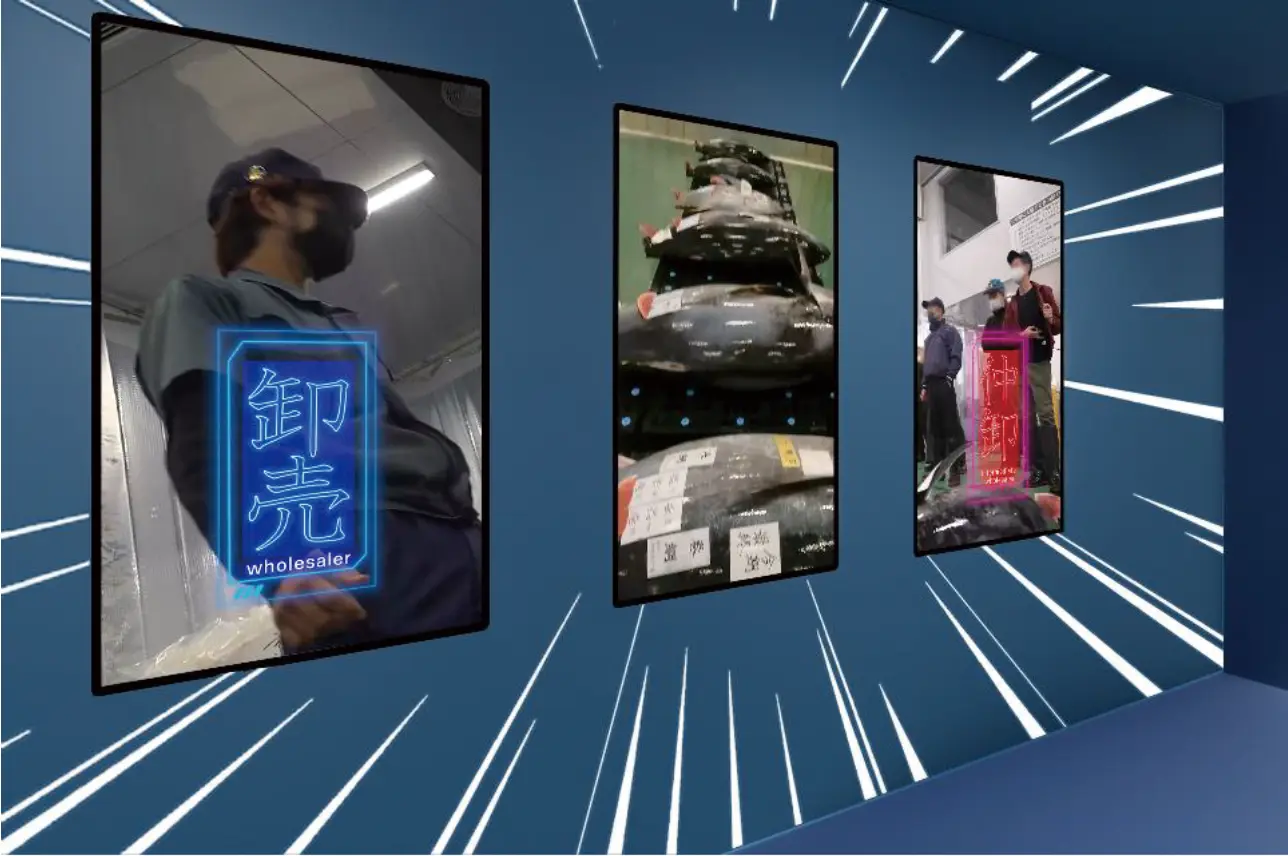
Photo courtesy of Tansei Co., Ltd. / Photographer: Hiroshi Matsuki
"Seri ON STAGE" offers an immersive experience of the excitement of fish auctions.
After visiting Kyo no Shoku Museum Ajiwaikan, take a short walk to the Kyoto City Central Wholesale Market’s Suisan Building Viewing Area to deepen your knowledge of Kyoto’s food culture.
Established in 1927, Kyoto City Central Wholesale Market was Japan’s first central wholesale market. Every day, large quantities of fresh seafood and other perishable goods arrive from across Japan and overseas, where they are bought and sold by wholesalers and distributors. This time, we visited the Suisan Building Viewing Area, which opened in April 2023.
The area offers hands-on exhibits that make learning fun. At the "SERI ON STAGE" exhibit, visitors can feel as if they are participating in a real fish auction. The "Moto Ride Tour" allows guests to take a simulated ride on a small transport vehicle used in the market. At the "Touch de Market Quiz" corner, visitors can test their knowledge of Kyoto’s food culture, seafood, and the workings of the market.
One of the most popular attractions is the black tuna photo spot, where visitors can take a picture as if they have just landed a giant tuna—a perfect memento of the trip.
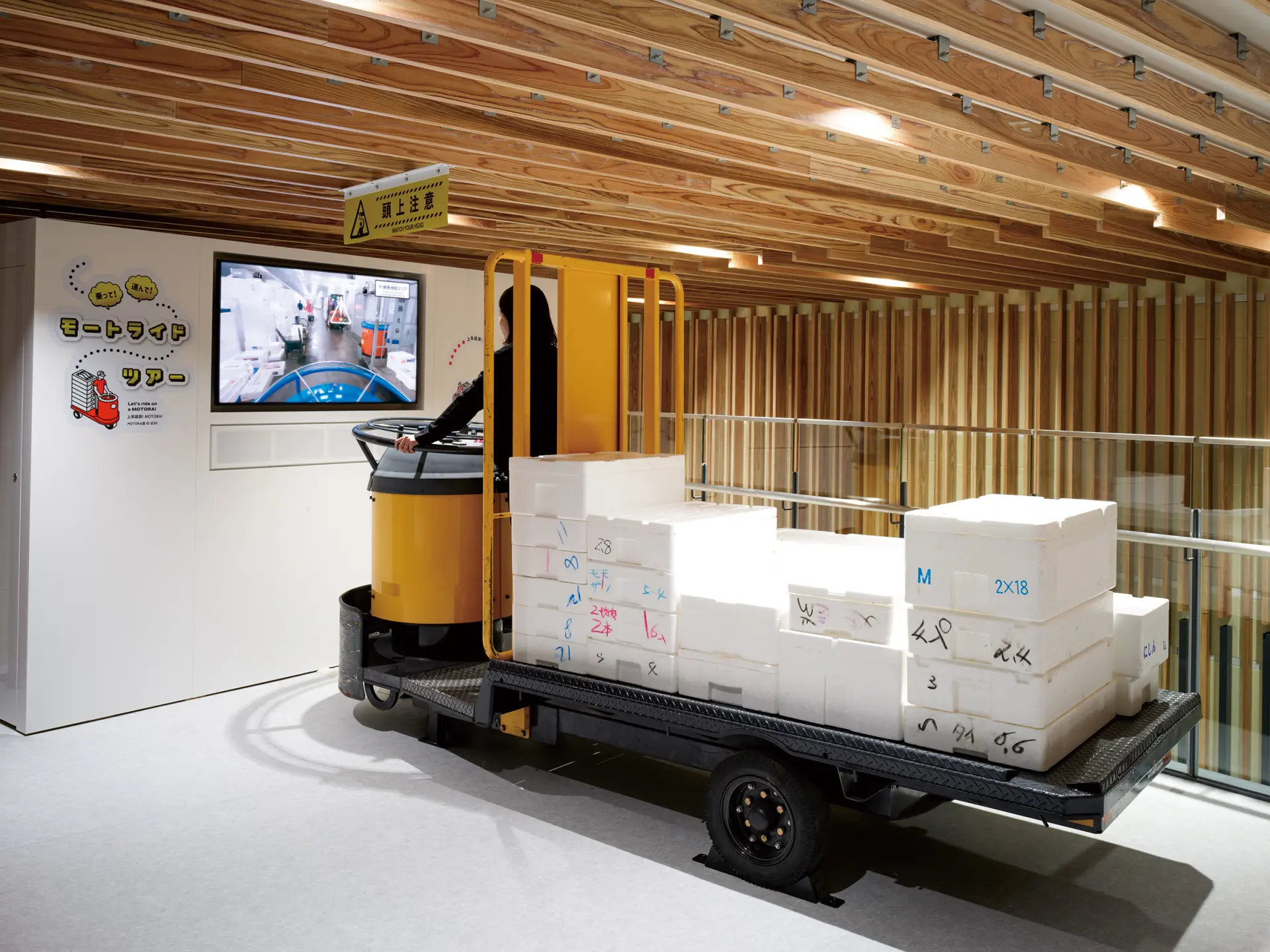
A simulated experience of racing through the market while watching a video.
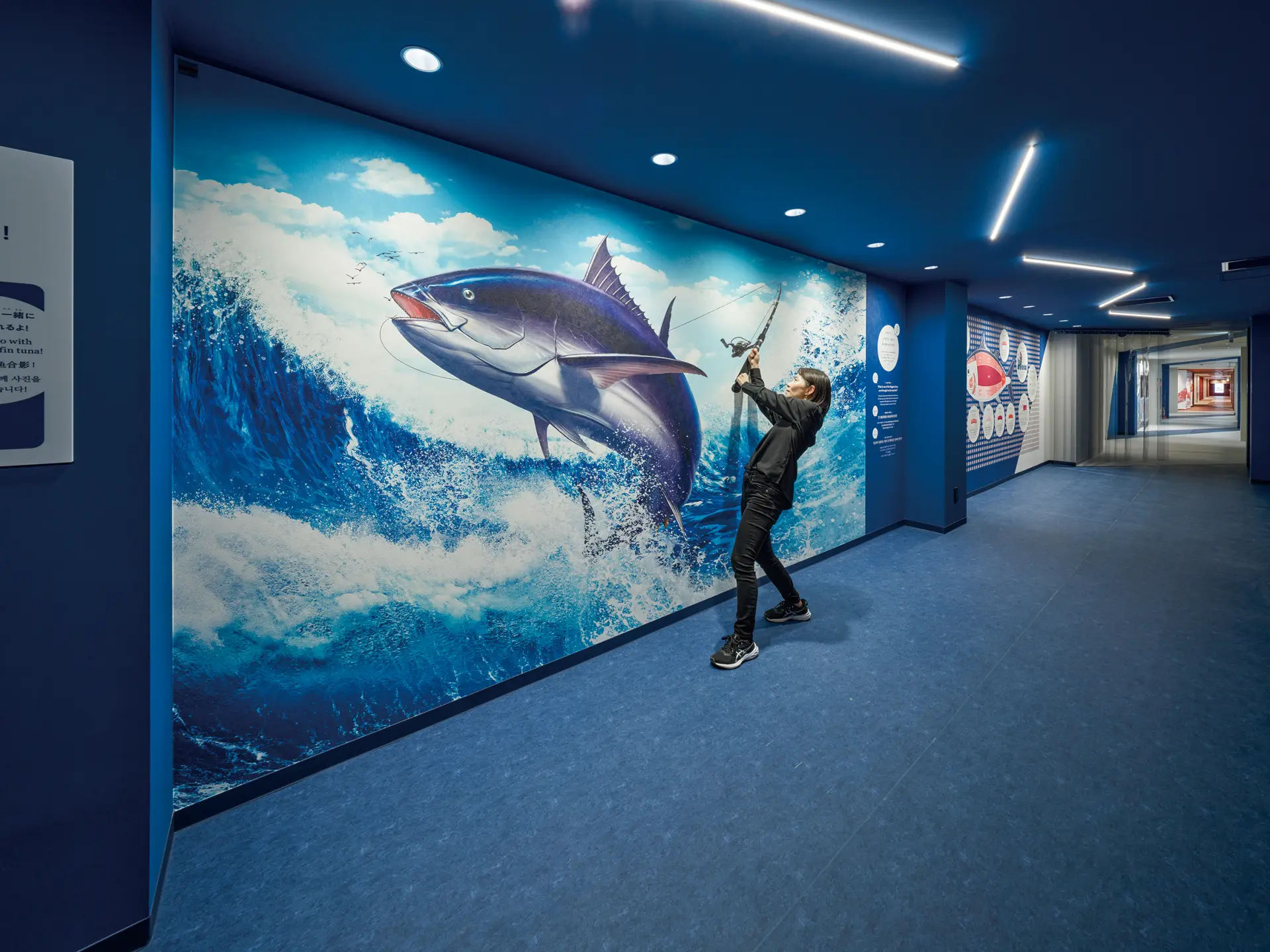
Feel like you’re reeling in a giant bluefin tuna.
Basic Information
- Name in Japanese
- 京都市中央市場 水産棟
- Address
- 80 Suzaku Bunkicho, Shimogyo-ku, Kyoto 600-8847
- Phone
- 075-323-6777
- Access
- 4-minute walk from JR Sagano Line Umekoji Kyoto Nishi Station
- Hours
- 5:00–17:00
- Admission
- Free
- Closed
- Wednesdays (open if a holiday), December 31 – January 4
- URL
- URL
13:10 – Savor the Freshest Seafood at "Uodonya Totoya"
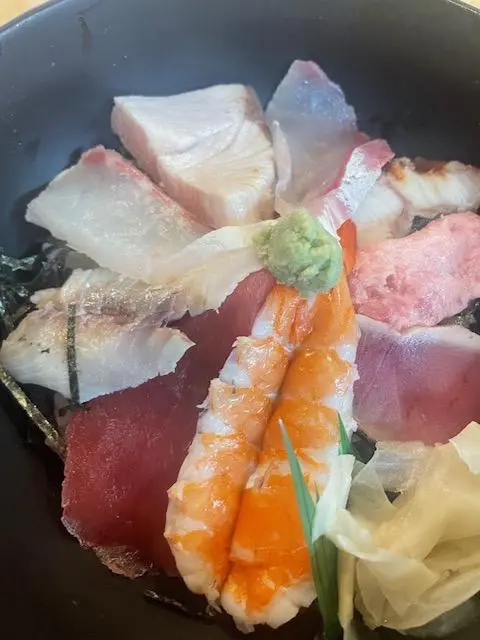
A seafood rice bowl topped with around ten different ingredients
After exploring the Kyoto Central Market Suisan Building, the lifelike food replicas and vivid seafood displays whetted our appetite, leaving us eager for lunch. Without hesitation, we made our way to Sakana Tonya Totoya, a seafood eatery located just outside the Kyoto Central Market. Officially recommended as one of Kyoto Central Market’s top seasonal dining spots, it also boasts an excellent location, just a two-minute walk from the Suisan Building.
Operated by a seafood wholesaler from Kyoto Central Market, the restaurant guarantees exceptional freshness. The storefront showcases a variety of fresh seafood, with tuna as the highlight, all available at unbeatable prices. The eatery also features an indoor dining area, where guests can enjoy their seafood on the spot.
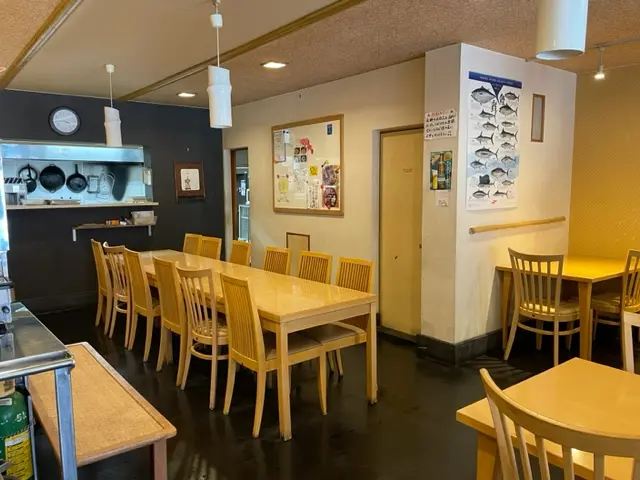
A cozy little restaurant with approximately 20 seats, offering both table and counter seating.
The menu is, of course, very affordable. We opted for a kaisendon, a rice bowl topped with an assortment of fresh seafood. Other options include the daily sashimi set, negimaguro-don (tuna and scallion rice bowl), and toromaguro-don (fatty tuna rice bowl). For those who prefer cooked dishes, options include a mixed-fry set meal, tuna cutlet set meal, and shrimp fry set meal. With its warm and inviting atmosphere, the restaurant attracts many regular customers who enjoy not just the food but also chatting with the friendly staff.
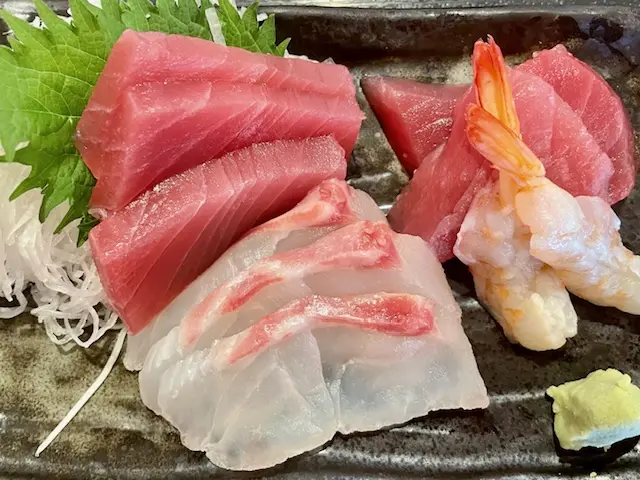
A sashimi set meal featuring ultra-fresh cuts of fish
Basic Information
- Name in Japanese
- 魚問屋 ととや
- Address
- 64 Suzaku Kitanokuchi-cho, Shimogyo-ku, Kyoto 600-8845
- Phone
- 075-315-1921
- Access
- 2-minute walk from JR Sagano Line Umekoji Kyoto Nishi Station
- Hours
- Lunch 11:30–14:00, Izakaya 16:00–20:00
- Closed
- Wednesdays, Sundays, Holidays, Kyoto Wholesale Market Closure Days
- URL
- URL
15:00 – Visit Kyoto’s Oldest Sake Brewery: Matsui Sake Brewery
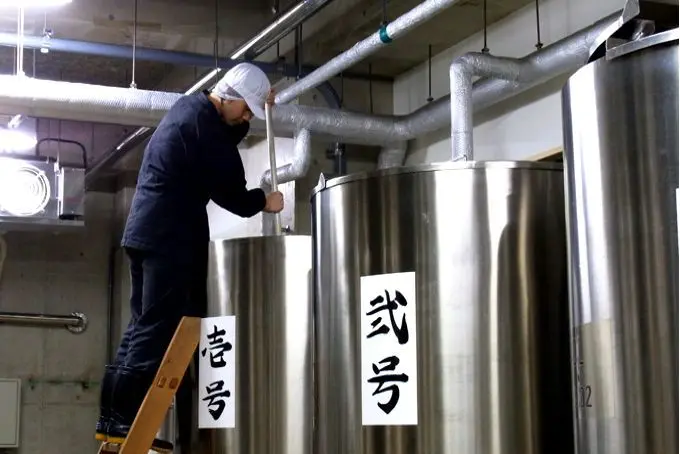
If you're lucky, you may get to see the 'kai-ire' (stirring) process in action.
After a satisfying seafood meal, we headed to Matsui Shuzo for a sake brewery tour. From Umekoji Kyoto Nishi Station, we took the JR San’in Main Line to Nijo Station. From there, we transferred to City Bus No. 201 and got off at Demachiyanagi Bus Stop. Located near the Kamo River, Matsui Shuzo was the perfect way to conclude our journey through Kyoto’s culinary heritage.
Founded in 1726, Matsui Shuzo is Kyoto’s oldest sake brewery. While preserving its long-standing traditions, the brewery also incorporates modern technology, including solar power generation. It produces sacred sake for temples and shrines, including Kinkaku-ji and Ginkaku-ji, while supplying its signature brands, KAGURA and Fuji Chitose, to Kyoto’s top restaurants.
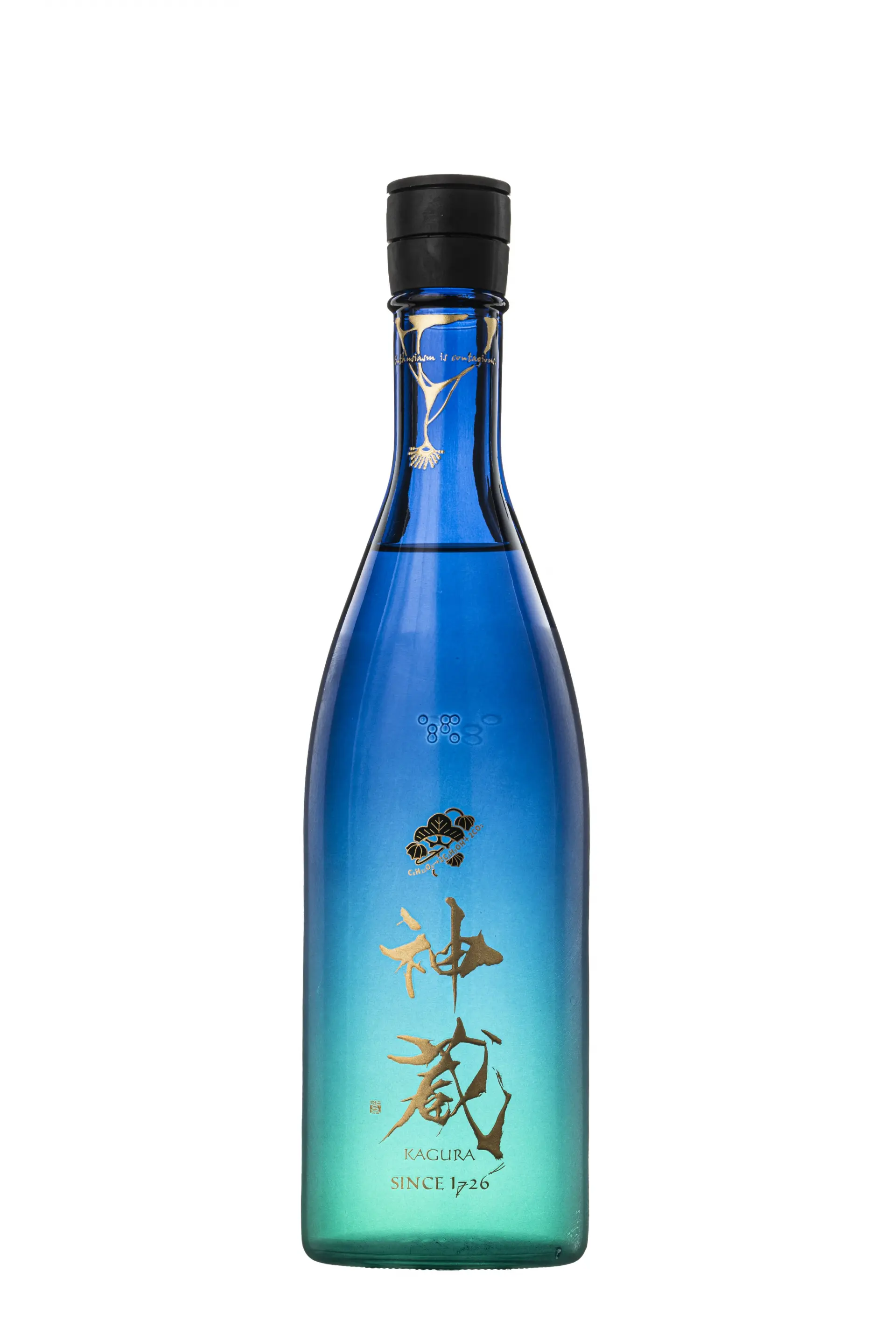
Junmai KAGURA “Midnight Blue” Unfiltered, undiluted, Unpasteurized
What surprised us first was that the brewery was located on the first floor of an apartment building. After the original brewery was demolished, the company was determined to continue brewing sake on its historic site, so they returned and reopened here.
The brewery features a small 30-mat brewing space where guided tours are held. Visitors can observe key stages of sake brewing, from steaming rice in a massive cauldron to cultivating koji mold.
After the tour, we sampled a variety of beverages at the tasting counter, including sake, liqueurs, and spirits. Comparing different types of sake and savoring their unique flavors was a delightful experience. We also came across brewery specialties such as onigiri made with sake rice and kasujiru (sake lees soup), which piqued our interest. We vowed to come back with an empty stomach next time to enjoy them properly.
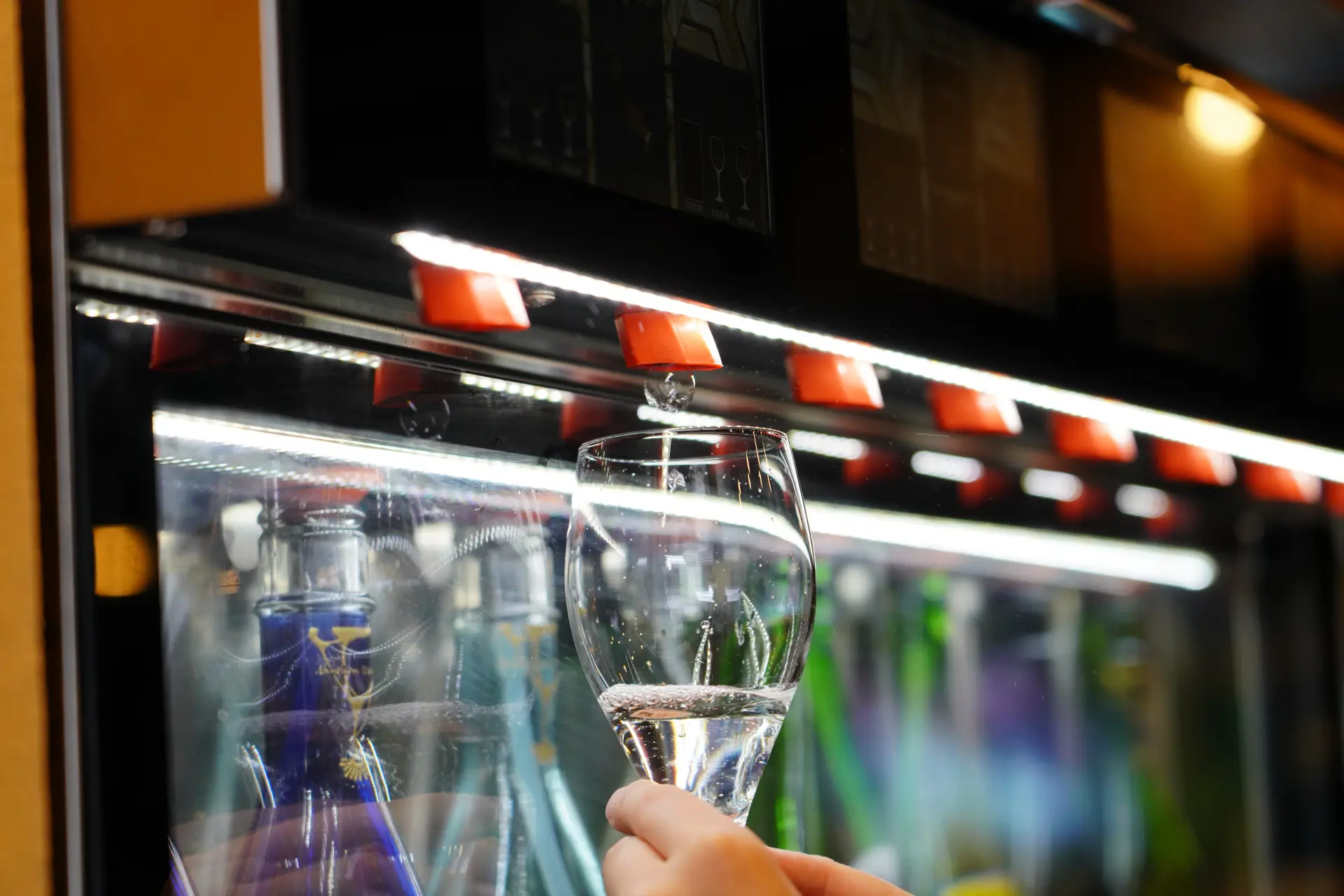
After observing the sake brewing process, tasting it makes the experience even more special.
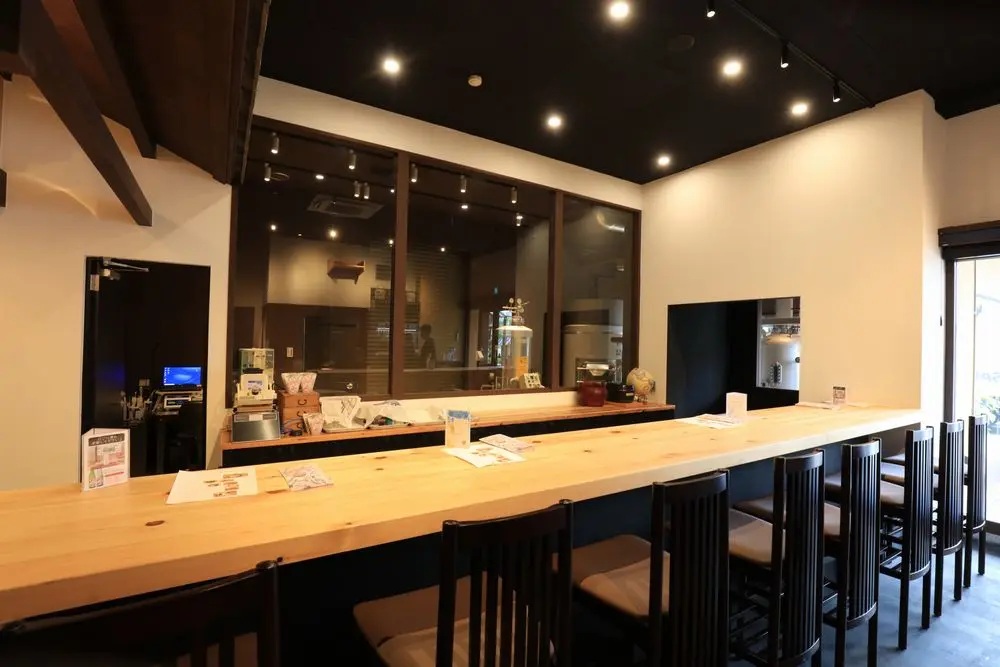
Shuchusen, a tasting room where you can sample sake while viewing the distillation equipment.
Basic Information
- Name in Japanese
- 古都・京都の酒蔵見学 創業300年 清酒「神蔵」醸造元を巡る
- URL
- URL
Wrap-up
This itinerary provided a comprehensive journey through Kyoto’s traditional food culture, from the scenic tea fields of Wazuka to the vibrant central market and historic sake breweries. The variety of Japanese teas, the depth of Kyoto cuisine, and the long-standing culinary heritage unique to the ancient capital made this trip a truly enriching experience. Gaining insight into Kyoto’s rich food traditions made us appreciate Washoku on an even deeper level.
Check also...
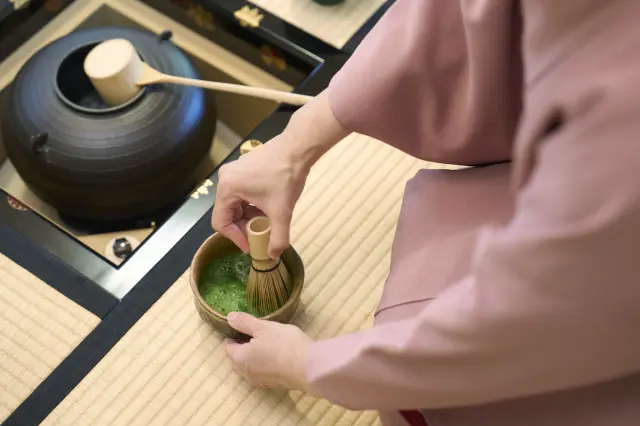
Osaka: A Journey Through Traditional Osaka
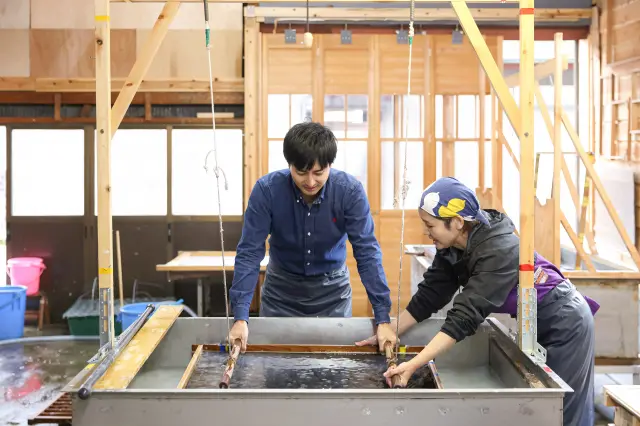
Fukui: A Journey to Experience Japan’s World-Class Craftsmanship
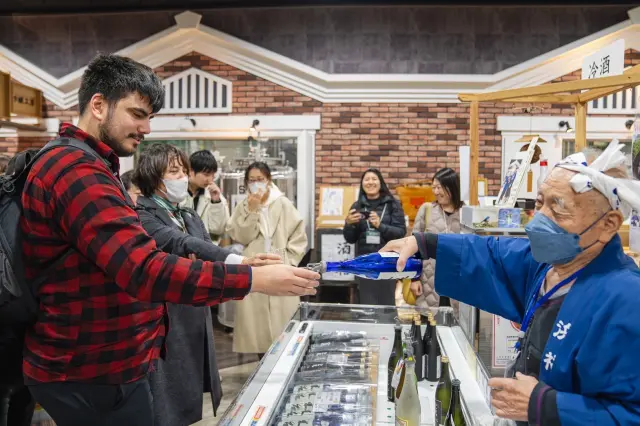
Hyogo: A Journey in Search of Japan’s Finest Sake

Mie: A Journey to Experience the "Ama Culture" Living Along the Beautiful Ise-Shima Sea
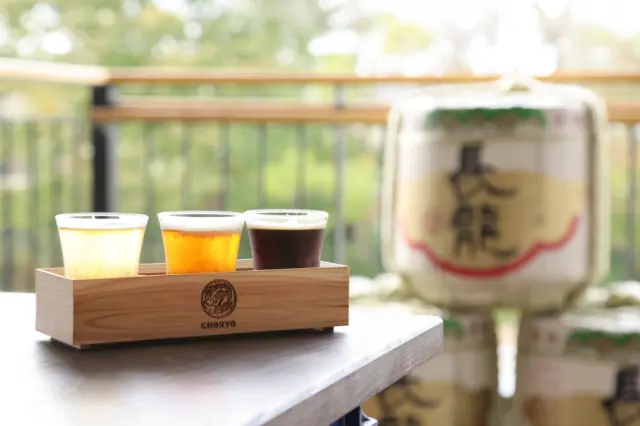
Nara: A Journey Through Its Ancient Fermentation Culture
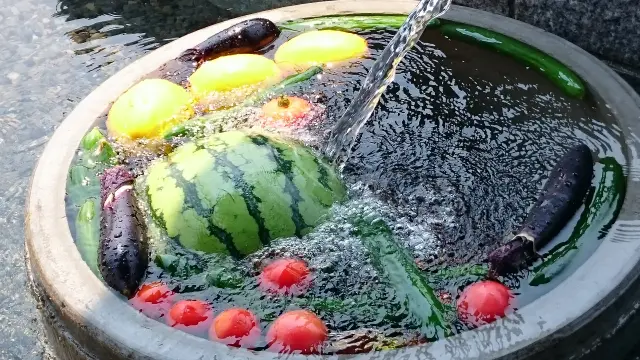
Shiga: Days Steeped in Nature and Blessed Waters Along Lake Biwa
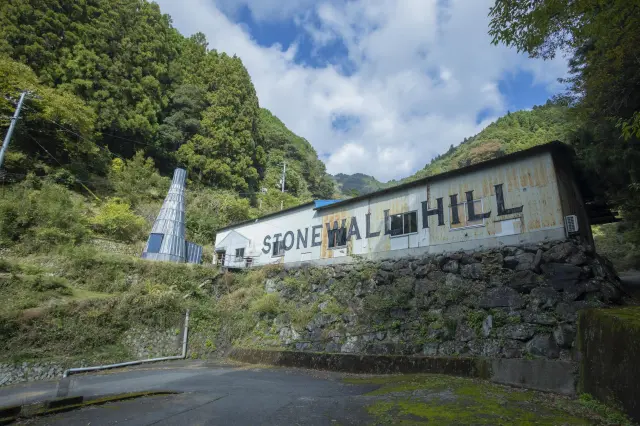
Tokushima: A Journey into Slow Living in the Mountains of Tokushima

Tottori: A Journey to Unwind in the Majesty of Nature at San’in Kaigan Geopark
